41+ Critical Thinking Examples (Definition + Practices)

Critical thinking is an essential skill in our information-overloaded world, where figuring out what is fact and fiction has become increasingly challenging.
But why is critical thinking essential? Put, critical thinking empowers us to make better decisions, challenge and validate our beliefs and assumptions, and understand and interact with the world more effectively and meaningfully.
Critical thinking is like using your brain's "superpowers" to make smart choices. Whether it's picking the right insurance, deciding what to do in a job, or discussing topics in school, thinking deeply helps a lot. In the next parts, we'll share real-life examples of when this superpower comes in handy and give you some fun exercises to practice it.

Critical Thinking Process Outline

Critical thinking means thinking clearly and fairly without letting personal feelings get in the way. It's like being a detective, trying to solve a mystery by using clues and thinking hard about them.
It isn't always easy to think critically, as it can take a pretty smart person to see some of the questions that aren't being answered in a certain situation. But, we can train our brains to think more like puzzle solvers, which can help develop our critical thinking skills.
Here's what it looks like step by step:
Spotting the Problem: It's like discovering a puzzle to solve. You see that there's something you need to figure out or decide.
Collecting Clues: Now, you need to gather information. Maybe you read about it, watch a video, talk to people, or do some research. It's like getting all the pieces to solve your puzzle.
Breaking It Down: This is where you look at all your clues and try to see how they fit together. You're asking questions like: Why did this happen? What could happen next?
Checking Your Clues: You want to make sure your information is good. This means seeing if what you found out is true and if you can trust where it came from.
Making a Guess: After looking at all your clues, you think about what they mean and come up with an answer. This answer is like your best guess based on what you know.
Explaining Your Thoughts: Now, you tell others how you solved the puzzle. You explain how you thought about it and how you answered.
Checking Your Work: This is like looking back and seeing if you missed anything. Did you make any mistakes? Did you let any personal feelings get in the way? This step helps make sure your thinking is clear and fair.
And remember, you might sometimes need to go back and redo some steps if you discover something new. If you realize you missed an important clue, you might have to go back and collect more information.
Critical Thinking Methods
Just like doing push-ups or running helps our bodies get stronger, there are special exercises that help our brains think better. These brain workouts push us to think harder, look at things closely, and ask many questions.
It's not always about finding the "right" answer. Instead, it's about the journey of thinking and asking "why" or "how." Doing these exercises often helps us become better thinkers and makes us curious to know more about the world.
Now, let's look at some brain workouts to help us think better:
1. "What If" Scenarios
Imagine crazy things happening, like, "What if there was no internet for a month? What would we do?" These games help us think of new and different ideas.
Pick a hot topic. Argue one side of it and then try arguing the opposite. This makes us see different viewpoints and think deeply about a topic.
3. Analyze Visual Data
Check out charts or pictures with lots of numbers and info but no explanations. What story are they telling? This helps us get better at understanding information just by looking at it.
4. Mind Mapping
Write an idea in the center and then draw lines to related ideas. It's like making a map of your thoughts. This helps us see how everything is connected.
There's lots of mind-mapping software , but it's also nice to do this by hand.
5. Weekly Diary
Every week, write about what happened, the choices you made, and what you learned. Writing helps us think about our actions and how we can do better.
6. Evaluating Information Sources
Collect stories or articles about one topic from newspapers or blogs. Which ones are trustworthy? Which ones might be a little biased? This teaches us to be smart about where we get our info.
There are many resources to help you determine if information sources are factual or not.
7. Socratic Questioning
This way of thinking is called the Socrates Method, named after an old-time thinker from Greece. It's about asking lots of questions to understand a topic. You can do this by yourself or chat with a friend.
Start with a Big Question:
"What does 'success' mean?"
Dive Deeper with More Questions:
"Why do you think of success that way?" "Do TV shows, friends, or family make you think that?" "Does everyone think about success the same way?"
"Can someone be a winner even if they aren't rich or famous?" "Can someone feel like they didn't succeed, even if everyone else thinks they did?"
Look for Real-life Examples:
"Who is someone you think is successful? Why?" "Was there a time you felt like a winner? What happened?"
Think About Other People's Views:
"How might a person from another country think about success?" "Does the idea of success change as we grow up or as our life changes?"
Think About What It Means:
"How does your idea of success shape what you want in life?" "Are there problems with only wanting to be rich or famous?"
Look Back and Think:
"After talking about this, did your idea of success change? How?" "Did you learn something new about what success means?"

8. Six Thinking Hats
Edward de Bono came up with a cool way to solve problems by thinking in six different ways, like wearing different colored hats. You can do this independently, but it might be more effective in a group so everyone can have a different hat color. Each color has its way of thinking:
White Hat (Facts): Just the facts! Ask, "What do we know? What do we need to find out?"
Red Hat (Feelings): Talk about feelings. Ask, "How do I feel about this?"
Black Hat (Careful Thinking): Be cautious. Ask, "What could go wrong?"
Yellow Hat (Positive Thinking): Look on the bright side. Ask, "What's good about this?"
Green Hat (Creative Thinking): Think of new ideas. Ask, "What's another way to look at this?"
Blue Hat (Planning): Organize the talk. Ask, "What should we do next?"
When using this method with a group:
- Explain all the hats.
- Decide which hat to wear first.
- Make sure everyone switches hats at the same time.
- Finish with the Blue Hat to plan the next steps.
9. SWOT Analysis
SWOT Analysis is like a game plan for businesses to know where they stand and where they should go. "SWOT" stands for Strengths, Weaknesses, Opportunities, and Threats.
There are a lot of SWOT templates out there for how to do this visually, but you can also think it through. It doesn't just apply to businesses but can be a good way to decide if a project you're working on is working.
Strengths: What's working well? Ask, "What are we good at?"
Weaknesses: Where can we do better? Ask, "Where can we improve?"
Opportunities: What good things might come our way? Ask, "What chances can we grab?"
Threats: What challenges might we face? Ask, "What might make things tough for us?"
Steps to do a SWOT Analysis:
- Goal: Decide what you want to find out.
- Research: Learn about your business and the world around it.
- Brainstorm: Get a group and think together. Talk about strengths, weaknesses, opportunities, and threats.
- Pick the Most Important Points: Some things might be more urgent or important than others.
- Make a Plan: Decide what to do based on your SWOT list.
- Check Again Later: Things change, so look at your SWOT again after a while to update it.
Now that you have a few tools for thinking critically, let’s get into some specific examples.
Everyday Examples
Life is a series of decisions. From the moment we wake up, we're faced with choices – some trivial, like choosing a breakfast cereal, and some more significant, like buying a home or confronting an ethical dilemma at work. While it might seem that these decisions are disparate, they all benefit from the application of critical thinking.
10. Deciding to buy something
Imagine you want a new phone. Don't just buy it because the ad looks cool. Think about what you need in a phone. Look up different phones and see what people say about them. Choose the one that's the best deal for what you want.
11. Deciding what is true
There's a lot of news everywhere. Don't believe everything right away. Think about why someone might be telling you this. Check if what you're reading or watching is true. Make up your mind after you've looked into it.
12. Deciding when you’re wrong
Sometimes, friends can have disagreements. Don't just get mad right away. Try to see where they're coming from. Talk about what's going on. Find a way to fix the problem that's fair for everyone.
13. Deciding what to eat
There's always a new diet or exercise that's popular. Don't just follow it because it's trendy. Find out if it's good for you. Ask someone who knows, like a doctor. Make choices that make you feel good and stay healthy.
14. Deciding what to do today
Everyone is busy with school, chores, and hobbies. Make a list of things you need to do. Decide which ones are most important. Plan your day so you can get things done and still have fun.
15. Making Tough Choices
Sometimes, it's hard to know what's right. Think about how each choice will affect you and others. Talk to people you trust about it. Choose what feels right in your heart and is fair to others.
16. Planning for the Future
Big decisions, like where to go to school, can be tricky. Think about what you want in the future. Look at the good and bad of each choice. Talk to people who know about it. Pick what feels best for your dreams and goals.

Job Examples
17. solving problems.
Workers brainstorm ways to fix a machine quickly without making things worse when a machine breaks at a factory.
18. Decision Making
A store manager decides which products to order more of based on what's selling best.
19. Setting Goals
A team leader helps their team decide what tasks are most important to finish this month and which can wait.
20. Evaluating Ideas
At a team meeting, everyone shares ideas for a new project. The group discusses each idea's pros and cons before picking one.
21. Handling Conflict
Two workers disagree on how to do a job. Instead of arguing, they talk calmly, listen to each other, and find a solution they both like.
22. Improving Processes
A cashier thinks of a faster way to ring up items so customers don't have to wait as long.
23. Asking Questions
Before starting a big task, an employee asks for clear instructions and checks if they have the necessary tools.
24. Checking Facts
Before presenting a report, someone double-checks all their information to make sure there are no mistakes.
25. Planning for the Future
A business owner thinks about what might happen in the next few years, like new competitors or changes in what customers want, and makes plans based on those thoughts.
26. Understanding Perspectives
A team is designing a new toy. They think about what kids and parents would both like instead of just what they think is fun.
School Examples
27. researching a topic.
For a history project, a student looks up different sources to understand an event from multiple viewpoints.
28. Debating an Issue
In a class discussion, students pick sides on a topic, like school uniforms, and share reasons to support their views.
29. Evaluating Sources
While writing an essay, a student checks if the information from a website is trustworthy or might be biased.
30. Problem Solving in Math
When stuck on a tricky math problem, a student tries different methods to find the answer instead of giving up.
31. Analyzing Literature
In English class, students discuss why a character in a book made certain choices and what those decisions reveal about them.
32. Testing a Hypothesis
For a science experiment, students guess what will happen and then conduct tests to see if they're right or wrong.
33. Giving Peer Feedback
After reading a classmate's essay, a student offers suggestions for improving it.
34. Questioning Assumptions
In a geography lesson, students consider why certain countries are called "developed" and what that label means.
35. Designing a Study
For a psychology project, students plan an experiment to understand how people's memories work and think of ways to ensure accurate results.
36. Interpreting Data
In a science class, students look at charts and graphs from a study, then discuss what the information tells them and if there are any patterns.
Critical Thinking Puzzles

Not all scenarios will have a single correct answer that can be figured out by thinking critically. Sometimes we have to think critically about ethical choices or moral behaviors.
Here are some mind games and scenarios you can solve using critical thinking. You can see the solution(s) at the end of the post.
37. The Farmer, Fox, Chicken, and Grain Problem
A farmer is at a riverbank with a fox, a chicken, and a grain bag. He needs to get all three items across the river. However, his boat can only carry himself and one of the three items at a time.
Here's the challenge:
- If the fox is left alone with the chicken, the fox will eat the chicken.
- If the chicken is left alone with the grain, the chicken will eat the grain.
How can the farmer get all three items across the river without any item being eaten?
38. The Rope, Jar, and Pebbles Problem
You are in a room with two long ropes hanging from the ceiling. Each rope is just out of arm's reach from the other, so you can't hold onto one rope and reach the other simultaneously.
Your task is to tie the two rope ends together, but you can't move the position where they hang from the ceiling.
You are given a jar full of pebbles. How do you complete the task?
39. The Two Guards Problem
Imagine there are two doors. One door leads to certain doom, and the other leads to freedom. You don't know which is which.
In front of each door stands a guard. One guard always tells the truth. The other guard always lies. You don't know which guard is which.
You can ask only one question to one of the guards. What question should you ask to find the door that leads to freedom?
40. The Hourglass Problem
You have two hourglasses. One measures 7 minutes when turned over, and the other measures 4 minutes. Using just these hourglasses, how can you time exactly 9 minutes?
41. The Lifeboat Dilemma
Imagine you're on a ship that's sinking. You get on a lifeboat, but it's already too full and might flip over.
Nearby in the water, five people are struggling: a scientist close to finding a cure for a sickness, an old couple who've been together for a long time, a mom with three kids waiting at home, and a tired teenager who helped save others but is now in danger.
You can only save one person without making the boat flip. Who would you choose?
42. The Tech Dilemma
You work at a tech company and help make a computer program to help small businesses. You're almost ready to share it with everyone, but you find out there might be a small chance it has a problem that could show users' private info.
If you decide to fix it, you must wait two more months before sharing it. But your bosses want you to share it now. What would you do?
43. The History Mystery
Dr. Amelia is a history expert. She's studying where a group of people traveled long ago. She reads old letters and documents to learn about it. But she finds some letters that tell a different story than what most people believe.
If she says this new story is true, it could change what people learn in school and what they think about history. What should she do?
The Role of Bias in Critical Thinking
Have you ever decided you don’t like someone before you even know them? Or maybe someone shared an idea with you that you immediately loved without even knowing all the details.
This experience is called bias, which occurs when you like or dislike something or someone without a good reason or knowing why. It can also take shape in certain reactions to situations, like a habit or instinct.
Bias comes from our own experiences, what friends or family tell us, or even things we are born believing. Sometimes, bias can help us stay safe, but other times it stops us from seeing the truth.
Not all bias is bad. Bias can be a mechanism for assessing our potential safety in a new situation. If we are biased to think that anything long, thin, and curled up is a snake, we might assume the rope is something to be afraid of before we know it is just a rope.
While bias might serve us in some situations (like jumping out of the way of an actual snake before we have time to process that we need to be jumping out of the way), it often harms our ability to think critically.
How Bias Gets in the Way of Good Thinking
Selective Perception: We only notice things that match our ideas and ignore the rest.
It's like only picking red candies from a mixed bowl because you think they taste the best, but they taste the same as every other candy in the bowl. It could also be when we see all the signs that our partner is cheating on us but choose to ignore them because we are happy the way we are (or at least, we think we are).
Agreeing with Yourself: This is called “ confirmation bias ” when we only listen to ideas that match our own and seek, interpret, and remember information in a way that confirms what we already think we know or believe.
An example is when someone wants to know if it is safe to vaccinate their children but already believes that vaccines are not safe, so they only look for information supporting the idea that vaccines are bad.
Thinking We Know It All: Similar to confirmation bias, this is called “overconfidence bias.” Sometimes we think our ideas are the best and don't listen to others. This can stop us from learning.
Have you ever met someone who you consider a “know it”? Probably, they have a lot of overconfidence bias because while they may know many things accurately, they can’t know everything. Still, if they act like they do, they show overconfidence bias.
There's a weird kind of bias similar to this called the Dunning Kruger Effect, and that is when someone is bad at what they do, but they believe and act like they are the best .
Following the Crowd: This is formally called “groupthink”. It's hard to speak up with a different idea if everyone agrees. But this can lead to mistakes.
An example of this we’ve all likely seen is the cool clique in primary school. There is usually one person that is the head of the group, the “coolest kid in school”, and everyone listens to them and does what they want, even if they don’t think it’s a good idea.
How to Overcome Biases
Here are a few ways to learn to think better, free from our biases (or at least aware of them!).
Know Your Biases: Realize that everyone has biases. If we know about them, we can think better.
Listen to Different People: Talking to different kinds of people can give us new ideas.
Ask Why: Always ask yourself why you believe something. Is it true, or is it just a bias?
Understand Others: Try to think about how others feel. It helps you see things in new ways.
Keep Learning: Always be curious and open to new information.

In today's world, everything changes fast, and there's so much information everywhere. This makes critical thinking super important. It helps us distinguish between what's real and what's made up. It also helps us make good choices. But thinking this way can be tough sometimes because of biases. These are like sneaky thoughts that can trick us. The good news is we can learn to see them and think better.
There are cool tools and ways we've talked about, like the "Socratic Questioning" method and the "Six Thinking Hats." These tools help us get better at thinking. These thinking skills can also help us in school, work, and everyday life.
We’ve also looked at specific scenarios where critical thinking would be helpful, such as deciding what diet to follow and checking facts.
Thinking isn't just a skill—it's a special talent we improve over time. Working on it lets us see things more clearly and understand the world better. So, keep practicing and asking questions! It'll make you a smarter thinker and help you see the world differently.
Critical Thinking Puzzles (Solutions)
The farmer, fox, chicken, and grain problem.
- The farmer first takes the chicken across the river and leaves it on the other side.
- He returns to the original side and takes the fox across the river.
- After leaving the fox on the other side, he returns the chicken to the starting side.
- He leaves the chicken on the starting side and takes the grain bag across the river.
- He leaves the grain with the fox on the other side and returns to get the chicken.
- The farmer takes the chicken across, and now all three items -- the fox, the chicken, and the grain -- are safely on the other side of the river.
The Rope, Jar, and Pebbles Problem
- Take one rope and tie the jar of pebbles to its end.
- Swing the rope with the jar in a pendulum motion.
- While the rope is swinging, grab the other rope and wait.
- As the swinging rope comes back within reach due to its pendulum motion, grab it.
- With both ropes within reach, untie the jar and tie the rope ends together.
The Two Guards Problem
The question is, "What would the other guard say is the door to doom?" Then choose the opposite door.
The Hourglass Problem
- Start both hourglasses.
- When the 4-minute hourglass runs out, turn it over.
- When the 7-minute hourglass runs out, the 4-minute hourglass will have been running for 3 minutes. Turn the 7-minute hourglass over.
- When the 4-minute hourglass runs out for the second time (a total of 8 minutes have passed), the 7-minute hourglass will run for 1 minute. Turn the 7-minute hourglass again for 1 minute to empty the hourglass (a total of 9 minutes passed).
The Boat and Weights Problem
Take the cat over first and leave it on the other side. Then, return and take the fish across next. When you get there, take the cat back with you. Leave the cat on the starting side and take the cat food across. Lastly, return to get the cat and bring it to the other side.
The Lifeboat Dilemma
There isn’t one correct answer to this problem. Here are some elements to consider:
- Moral Principles: What values guide your decision? Is it the potential greater good for humanity (the scientist)? What is the value of long-standing love and commitment (the elderly couple)? What is the future of young children who depend on their mothers? Or the selfless bravery of the teenager?
- Future Implications: Consider the future consequences of each choice. Saving the scientist might benefit millions in the future, but what moral message does it send about the value of individual lives?
- Emotional vs. Logical Thinking: While it's essential to engage empathy, it's also crucial not to let emotions cloud judgment entirely. For instance, while the teenager's bravery is commendable, does it make him more deserving of a spot on the boat than the others?
- Acknowledging Uncertainty: The scientist claims to be close to a significant breakthrough, but there's no certainty. How does this uncertainty factor into your decision?
- Personal Bias: Recognize and challenge any personal biases, such as biases towards age, profession, or familial status.
The Tech Dilemma
Again, there isn’t one correct answer to this problem. Here are some elements to consider:
- Evaluate the Risk: How severe is the potential vulnerability? Can it be easily exploited, or would it require significant expertise? Even if the circumstances are rare, what would be the consequences if the vulnerability were exploited?
- Stakeholder Considerations: Different stakeholders will have different priorities. Upper management might prioritize financial projections, the marketing team might be concerned about the product's reputation, and customers might prioritize the security of their data. How do you balance these competing interests?
- Short-Term vs. Long-Term Implications: While launching on time could meet immediate financial goals, consider the potential long-term damage to the company's reputation if the vulnerability is exploited. Would the short-term gains be worth the potential long-term costs?
- Ethical Implications : Beyond the financial and reputational aspects, there's an ethical dimension to consider. Is it right to release a product with a known vulnerability, even if the chances of it being exploited are low?
- Seek External Input: Consulting with cybersecurity experts outside your company might be beneficial. They could provide a more objective risk assessment and potential mitigation strategies.
- Communication: How will you communicate the decision, whatever it may be, both internally to your team and upper management and externally to your customers and potential users?
The History Mystery
Dr. Amelia should take the following steps:
- Verify the Letters: Before making any claims, she should check if the letters are actual and not fake. She can do this by seeing when and where they were written and if they match with other things from that time.
- Get a Second Opinion: It's always good to have someone else look at what you've found. Dr. Amelia could show the letters to other history experts and see their thoughts.
- Research More: Maybe there are more documents or letters out there that support this new story. Dr. Amelia should keep looking to see if she can find more evidence.
- Share the Findings: If Dr. Amelia believes the letters are true after all her checks, she should tell others. This can be through books, talks, or articles.
- Stay Open to Feedback: Some people might agree with Dr. Amelia, and others might not. She should listen to everyone and be ready to learn more or change her mind if new information arises.
Ultimately, Dr. Amelia's job is to find out the truth about history and share it. It's okay if this new truth differs from what people used to believe. History is about learning from the past, no matter the story.
Related posts:
- Experimenter Bias (Definition + Examples)
- Hasty Generalization Fallacy (31 Examples + Similar Names)
- Ad Hoc Fallacy (29 Examples + Other Names)
- Confirmation Bias (Examples + Definition)
- Equivocation Fallacy (26 Examples + Description)
Reference this article:
About The Author

Free Personality Test

Free Memory Test

Free IQ Test

PracticalPie.com is a participant in the Amazon Associates Program. As an Amazon Associate we earn from qualifying purchases.
Follow Us On:
Youtube Facebook Instagram X/Twitter
Psychology Resources
Developmental
Personality
Relationships
Psychologists
Serial Killers
Psychology Tests
Personality Quiz
Memory Test
Depression test
Type A/B Personality Test
© PracticalPsychology. All rights reserved
Privacy Policy | Terms of Use

- Get started with computers
- Learn Microsoft Office
- Apply for a job
- Improve my work skills
- Design nice-looking docs
- Getting Started
- Smartphones & Tablets
- Typing Tutorial
- Online Learning
- Basic Internet Skills
- Online Safety
- Social Media
- Zoom Basics
- Google Docs
- Google Sheets
- Career Planning
- Resume Writing
- Cover Letters
- Job Search and Networking
- Business Communication
- Entrepreneurship 101
- Careers without College
- Job Hunt for Today
- 3D Printing
- Freelancing 101
- Personal Finance
- Sharing Economy
- Decision-Making
- Graphic Design
- Photography
- Image Editing
- Learning WordPress
- Language Learning
- Critical Thinking
- For Educators
- Translations
- Staff Picks
- English expand_more expand_less
Critical Thinking and Decision-Making - What is Critical Thinking?
Critical thinking and decision-making -, what is critical thinking, critical thinking and decision-making what is critical thinking.

Critical Thinking and Decision-Making: What is Critical Thinking?
Lesson 1: what is critical thinking, what is critical thinking.
Critical thinking is a term that gets thrown around a lot. You've probably heard it used often throughout the years whether it was in school, at work, or in everyday conversation. But when you stop to think about it, what exactly is critical thinking and how do you do it ?
Watch the video below to learn more about critical thinking.
Simply put, critical thinking is the act of deliberately analyzing information so that you can make better judgements and decisions . It involves using things like logic, reasoning, and creativity, to draw conclusions and generally understand things better.

This may sound like a pretty broad definition, and that's because critical thinking is a broad skill that can be applied to so many different situations. You can use it to prepare for a job interview, manage your time better, make decisions about purchasing things, and so much more.
The process

As humans, we are constantly thinking . It's something we can't turn off. But not all of it is critical thinking. No one thinks critically 100% of the time... that would be pretty exhausting! Instead, it's an intentional process , something that we consciously use when we're presented with difficult problems or important decisions.
Improving your critical thinking

In order to become a better critical thinker, it's important to ask questions when you're presented with a problem or decision, before jumping to any conclusions. You can start with simple ones like What do I currently know? and How do I know this? These can help to give you a better idea of what you're working with and, in some cases, simplify more complex issues.
Real-world applications

Let's take a look at how we can use critical thinking to evaluate online information . Say a friend of yours posts a news article on social media and you're drawn to its headline. If you were to use your everyday automatic thinking, you might accept it as fact and move on. But if you were thinking critically, you would first analyze the available information and ask some questions :
- What's the source of this article?
- Is the headline potentially misleading?
- What are my friend's general beliefs?
- Do their beliefs inform why they might have shared this?

After analyzing all of this information, you can draw a conclusion about whether or not you think the article is trustworthy.
Critical thinking has a wide range of real-world applications . It can help you to make better decisions, become more hireable, and generally better understand the world around you.

/en/problem-solving-and-decision-making/why-is-it-so-hard-to-make-decisions/content/

How it works
For Business
Join Mind Tools
Article • 8 min read
Critical Thinking
Developing the right mindset and skills.
By the Mind Tools Content Team
We make hundreds of decisions every day and, whether we realize it or not, we're all critical thinkers.
We use critical thinking each time we weigh up our options, prioritize our responsibilities, or think about the likely effects of our actions. It's a crucial skill that helps us to cut out misinformation and make wise decisions. The trouble is, we're not always very good at it!
In this article, we'll explore the key skills that you need to develop your critical thinking skills, and how to adopt a critical thinking mindset, so that you can make well-informed decisions.
What Is Critical Thinking?
Critical thinking is the discipline of rigorously and skillfully using information, experience, observation, and reasoning to guide your decisions, actions, and beliefs. You'll need to actively question every step of your thinking process to do it well.
Collecting, analyzing and evaluating information is an important skill in life, and a highly valued asset in the workplace. People who score highly in critical thinking assessments are also rated by their managers as having good problem-solving skills, creativity, strong decision-making skills, and good overall performance. [1]
Key Critical Thinking Skills
Critical thinkers possess a set of key characteristics which help them to question information and their own thinking. Focus on the following areas to develop your critical thinking skills:
Being willing and able to explore alternative approaches and experimental ideas is crucial. Can you think through "what if" scenarios, create plausible options, and test out your theories? If not, you'll tend to write off ideas and options too soon, so you may miss the best answer to your situation.
To nurture your curiosity, stay up to date with facts and trends. You'll overlook important information if you allow yourself to become "blinkered," so always be open to new information.
But don't stop there! Look for opposing views or evidence to challenge your information, and seek clarification when things are unclear. This will help you to reassess your beliefs and make a well-informed decision later. Read our article, Opening Closed Minds , for more ways to stay receptive.
Logical Thinking
You must be skilled at reasoning and extending logic to come up with plausible options or outcomes.
It's also important to emphasize logic over emotion. Emotion can be motivating but it can also lead you to take hasty and unwise action, so control your emotions and be cautious in your judgments. Know when a conclusion is "fact" and when it is not. "Could-be-true" conclusions are based on assumptions and must be tested further. Read our article, Logical Fallacies , for help with this.
Use creative problem solving to balance cold logic. By thinking outside of the box you can identify new possible outcomes by using pieces of information that you already have.
Self-Awareness
Many of the decisions we make in life are subtly informed by our values and beliefs. These influences are called cognitive biases and it can be difficult to identify them in ourselves because they're often subconscious.
Practicing self-awareness will allow you to reflect on the beliefs you have and the choices you make. You'll then be better equipped to challenge your own thinking and make improved, unbiased decisions.
One particularly useful tool for critical thinking is the Ladder of Inference . It allows you to test and validate your thinking process, rather than jumping to poorly supported conclusions.
Developing a Critical Thinking Mindset
Combine the above skills with the right mindset so that you can make better decisions and adopt more effective courses of action. You can develop your critical thinking mindset by following this process:
Gather Information
First, collect data, opinions and facts on the issue that you need to solve. Draw on what you already know, and turn to new sources of information to help inform your understanding. Consider what gaps there are in your knowledge and seek to fill them. And look for information that challenges your assumptions and beliefs.
Be sure to verify the authority and authenticity of your sources. Not everything you read is true! Use this checklist to ensure that your information is valid:
- Are your information sources trustworthy ? (For example, well-respected authors, trusted colleagues or peers, recognized industry publications, websites, blogs, etc.)
- Is the information you have gathered up to date ?
- Has the information received any direct criticism ?
- Does the information have any errors or inaccuracies ?
- Is there any evidence to support or corroborate the information you have gathered?
- Is the information you have gathered subjective or biased in any way? (For example, is it based on opinion, rather than fact? Is any of the information you have gathered designed to promote a particular service or organization?)
If any information appears to be irrelevant or invalid, don't include it in your decision making. But don't omit information just because you disagree with it, or your final decision will be flawed and bias.
Now observe the information you have gathered, and interpret it. What are the key findings and main takeaways? What does the evidence point to? Start to build one or two possible arguments based on what you have found.
You'll need to look for the details within the mass of information, so use your powers of observation to identify any patterns or similarities. You can then analyze and extend these trends to make sensible predictions about the future.
To help you to sift through the multiple ideas and theories, it can be useful to group and order items according to their characteristics. From here, you can compare and contrast the different items. And once you've determined how similar or different things are from one another, Paired Comparison Analysis can help you to analyze them.
The final step involves challenging the information and rationalizing its arguments.
Apply the laws of reason (induction, deduction, analogy) to judge an argument and determine its merits. To do this, it's essential that you can determine the significance and validity of an argument to put it in the correct perspective. Take a look at our article, Rational Thinking , for more information about how to do this.
Once you have considered all of the arguments and options rationally, you can finally make an informed decision.
Afterward, take time to reflect on what you have learned and what you found challenging. Step back from the detail of your decision or problem, and look at the bigger picture. Record what you've learned from your observations and experience.
Critical thinking involves rigorously and skilfully using information, experience, observation, and reasoning to guide your decisions, actions and beliefs. It's a useful skill in the workplace and in life.
You'll need to be curious and creative to explore alternative possibilities, but rational to apply logic, and self-aware to identify when your beliefs could affect your decisions or actions.
You can demonstrate a high level of critical thinking by validating your information, analyzing its meaning, and finally evaluating the argument.
Critical Thinking Infographic
See Critical Thinking represented in our infographic: An Elementary Guide to Critical Thinking .

You've accessed 1 of your 2 free resources.
Get unlimited access
Discover more content
How to use linkedin effectively.
Getting the Best from the World's Biggest Networking Site
Expert Interviews
Wrong Fit, Right Fit: Why How We Work Matters More Than Ever
With André Martin
Add comment
Comments (1)
priyanka ghogare

Get 30% off your first year of Mind Tools
Great teams begin with empowered leaders. Our tools and resources offer the support to let you flourish into leadership. Join today!
Sign-up to our newsletter
Subscribing to the Mind Tools newsletter will keep you up-to-date with our latest updates and newest resources.
Subscribe now
Business Skills
Personal Development
Leadership and Management
Member Extras
Most Popular
Latest Updates

Tips for Dealing with Customers Effectively

Pain Points Podcast - Procrastination
Mind Tools Store
About Mind Tools Content
Discover something new today
Pain points podcast - starting a new job.
How to Hit the Ground Running!
Ten Dos and Don'ts of Career Conversations
How to talk to team members about their career aspirations.
How Emotionally Intelligent Are You?
Boosting Your People Skills
Self-Assessment
What's Your Leadership Style?
Learn About the Strengths and Weaknesses of the Way You Like to Lead
Recommended for you
Developing surveys.
Asking the Right Questions the Right Way
Business Operations and Process Management
Strategy Tools
Customer Service
Business Ethics and Values
Handling Information and Data
Project Management
Knowledge Management
Self-Development and Goal Setting
Time Management
Presentation Skills
Learning Skills
Career Skills
Communication Skills
Negotiation, Persuasion and Influence
Working With Others
Difficult Conversations
Creativity Tools
Self-Management
Work-Life Balance
Stress Management and Wellbeing
Coaching and Mentoring
Change Management
Team Management
Managing Conflict
Delegation and Empowerment
Performance Management
Leadership Skills
Developing Your Team
Talent Management
Problem Solving
Decision Making
Member Podcast

- LEARNING SKILLS
- Study Skills
- Critical Thinking
Search SkillsYouNeed:
Learning Skills:
- A - Z List of Learning Skills
- What is Learning?
- Learning Approaches
- Learning Styles
- 8 Types of Learning Styles
- Understanding Your Preferences to Aid Learning
- Lifelong Learning
- Decisions to Make Before Applying to University
- Top Tips for Surviving Student Life
- Living Online: Education and Learning
- 8 Ways to Embrace Technology-Based Learning Approaches
Critical Thinking Skills
- Critical Thinking and Fake News
- Understanding and Addressing Conspiracy Theories
- Critical Analysis
- Top Tips for Study
- Staying Motivated When Studying
- Student Budgeting and Economic Skills
- Getting Organised for Study
- Finding Time to Study
- Sources of Information
- Assessing Internet Information
- Using Apps to Support Study
- What is Theory?
- Styles of Writing
- Effective Reading
- Critical Reading
- Note-Taking from Reading
- Note-Taking for Verbal Exchanges
- Planning an Essay
- How to Write an Essay
- The Do’s and Don’ts of Essay Writing
- How to Write a Report
- Academic Referencing
- Assignment Finishing Touches
- Reflecting on Marked Work
- 6 Skills You Learn in School That You Use in Real Life
- Top 10 Tips on How to Study While Working
- Exam Skills
- Writing a Dissertation or Thesis
- Research Methods
- Teaching, Coaching, Mentoring and Counselling
- Employability Skills for Graduates
Subscribe to our FREE newsletter and start improving your life in just 5 minutes a day.
You'll get our 5 free 'One Minute Life Skills' and our weekly newsletter.
We'll never share your email address and you can unsubscribe at any time.
What is Critical Thinking?
Critical thinking is the ability to think clearly and rationally, understanding the logical connection between ideas. Critical thinking has been the subject of much debate and thought since the time of early Greek philosophers such as Plato and Socrates and has continued to be a subject of discussion into the modern age, for example the ability to recognise fake news .
Critical thinking might be described as the ability to engage in reflective and independent thinking.
In essence, critical thinking requires you to use your ability to reason. It is about being an active learner rather than a passive recipient of information.
Critical thinkers rigorously question ideas and assumptions rather than accepting them at face value. They will always seek to determine whether the ideas, arguments and findings represent the entire picture and are open to finding that they do not.
Critical thinkers will identify, analyse and solve problems systematically rather than by intuition or instinct.
Someone with critical thinking skills can:
Understand the links between ideas.
Determine the importance and relevance of arguments and ideas.
Recognise, build and appraise arguments.
Identify inconsistencies and errors in reasoning.
Approach problems in a consistent and systematic way.
Reflect on the justification of their own assumptions, beliefs and values.
Critical thinking is thinking about things in certain ways so as to arrive at the best possible solution in the circumstances that the thinker is aware of. In more everyday language, it is a way of thinking about whatever is presently occupying your mind so that you come to the best possible conclusion.
Critical Thinking is:
A way of thinking about particular things at a particular time; it is not the accumulation of facts and knowledge or something that you can learn once and then use in that form forever, such as the nine times table you learn and use in school.
The Skills We Need for Critical Thinking
The skills that we need in order to be able to think critically are varied and include observation, analysis, interpretation, reflection, evaluation, inference, explanation, problem solving, and decision making.
Specifically we need to be able to:
Think about a topic or issue in an objective and critical way.
Identify the different arguments there are in relation to a particular issue.
Evaluate a point of view to determine how strong or valid it is.
Recognise any weaknesses or negative points that there are in the evidence or argument.
Notice what implications there might be behind a statement or argument.
Provide structured reasoning and support for an argument that we wish to make.
The Critical Thinking Process
You should be aware that none of us think critically all the time.
Sometimes we think in almost any way but critically, for example when our self-control is affected by anger, grief or joy or when we are feeling just plain ‘bloody minded’.
On the other hand, the good news is that, since our critical thinking ability varies according to our current mindset, most of the time we can learn to improve our critical thinking ability by developing certain routine activities and applying them to all problems that present themselves.
Once you understand the theory of critical thinking, improving your critical thinking skills takes persistence and practice.
Try this simple exercise to help you to start thinking critically.
Think of something that someone has recently told you. Then ask yourself the following questions:
Who said it?
Someone you know? Someone in a position of authority or power? Does it matter who told you this?
What did they say?
Did they give facts or opinions? Did they provide all the facts? Did they leave anything out?
Where did they say it?
Was it in public or in private? Did other people have a chance to respond an provide an alternative account?
When did they say it?
Was it before, during or after an important event? Is timing important?
Why did they say it?
Did they explain the reasoning behind their opinion? Were they trying to make someone look good or bad?
How did they say it?
Were they happy or sad, angry or indifferent? Did they write it or say it? Could you understand what was said?
What are you Aiming to Achieve?
One of the most important aspects of critical thinking is to decide what you are aiming to achieve and then make a decision based on a range of possibilities.
Once you have clarified that aim for yourself you should use it as the starting point in all future situations requiring thought and, possibly, further decision making. Where needed, make your workmates, family or those around you aware of your intention to pursue this goal. You must then discipline yourself to keep on track until changing circumstances mean you have to revisit the start of the decision making process.
However, there are things that get in the way of simple decision making. We all carry with us a range of likes and dislikes, learnt behaviours and personal preferences developed throughout our lives; they are the hallmarks of being human. A major contribution to ensuring we think critically is to be aware of these personal characteristics, preferences and biases and make allowance for them when considering possible next steps, whether they are at the pre-action consideration stage or as part of a rethink caused by unexpected or unforeseen impediments to continued progress.
The more clearly we are aware of ourselves, our strengths and weaknesses, the more likely our critical thinking will be productive.
The Benefit of Foresight
Perhaps the most important element of thinking critically is foresight.
Almost all decisions we make and implement don’t prove disastrous if we find reasons to abandon them. However, our decision making will be infinitely better and more likely to lead to success if, when we reach a tentative conclusion, we pause and consider the impact on the people and activities around us.
The elements needing consideration are generally numerous and varied. In many cases, consideration of one element from a different perspective will reveal potential dangers in pursuing our decision.
For instance, moving a business activity to a new location may improve potential output considerably but it may also lead to the loss of skilled workers if the distance moved is too great. Which of these is the more important consideration? Is there some way of lessening the conflict?
These are the sort of problems that may arise from incomplete critical thinking, a demonstration perhaps of the critical importance of good critical thinking.
Further Reading from Skills You Need

The Skills You Need Guide for Students

Develop the skills you need to make the most of your time as a student.
Our eBooks are ideal for students at all stages of education, school, college and university. They are full of easy-to-follow practical information that will help you to learn more effectively and get better grades.
In Summary:
Critical thinking is aimed at achieving the best possible outcomes in any situation. In order to achieve this it must involve gathering and evaluating information from as many different sources possible.
Critical thinking requires a clear, often uncomfortable, assessment of your personal strengths, weaknesses and preferences and their possible impact on decisions you may make.
Critical thinking requires the development and use of foresight as far as this is possible. As Doris Day sang, “the future’s not ours to see”.
Implementing the decisions made arising from critical thinking must take into account an assessment of possible outcomes and ways of avoiding potentially negative outcomes, or at least lessening their impact.
- Critical thinking involves reviewing the results of the application of decisions made and implementing change where possible.
It might be thought that we are overextending our demands on critical thinking in expecting that it can help to construct focused meaning rather than examining the information given and the knowledge we have acquired to see if we can, if necessary, construct a meaning that will be acceptable and useful.
After all, almost no information we have available to us, either externally or internally, carries any guarantee of its life or appropriateness. Neat step-by-step instructions may provide some sort of trellis on which our basic understanding of critical thinking can blossom but it doesn’t and cannot provide any assurance of certainty, utility or longevity.
Continue to: Critical Thinking and Fake News Critical Reading
See also: Analytical Skills Understanding and Addressing Conspiracy Theories Introduction to Neuro-Linguistic Programming (NLP)
Why and How to Use Critical Thinking in Everyday Life
Written by Argumentful
Critical thinking is a helpful skill that allows you to analyze information and make informed decisions. It’s all about taking a step back and evaluating information objectively, considering multiple perspectives, and making sound judgments based on evidence. With critical thinking, you can tackle problems with confidence, communicate your thoughts and ideas clearly, and reduce the influence of emotions, biases, and misinformation. Plus, by using critical thinking, you can continue to grow and develop as a person by questioning your own beliefs and perspectives.
Elder and Paul’s article “ Critical Thinking: The Nature of Critical and Creative Thought ” argues that critical thinking is essential for success in everyday life. They explain that critical thinking involves analyzing and evaluating information, as well as generating new ideas and perspectives.
Overall, critical thinking is a valuable tool for all of us to navigate the complex and ever-changing world we live in.
Here are some examples of using critical thinking in our daily lives.
EXAMPLES OF CRITICAL THINKING IN EVERYDAY LIFE
Using critical thinking in making smart health choices.
When it comes to taking care of yourself, using critical thinking to check the reliability of your sources and weigh the strength of the evidence can help you make better decisions for your health. If your doctor recommends a certain treatment or you come across a new health trend online, how can you be sure it’s the right choice for you? By using critical thinking, you can evaluate the credibility of sources, consider the evidence behind health claims, and make informed decisions that promote your well-being. Whether it’s choosing a fitness plan, exploring alternative therapies, or making dietary changes, critical thinking can help you take control of your health and make choices that are truly right for you. Don’t just blindly follow health advice, use critical thinking to help you make informed decisions for a healthier you!
Smart budgeting for a stable future
By taking a closer look at your income and expenses, you can use critical thinking to make informed decisions about your finances that will set you up for long-term stability. Should you invest now or should you save for a rainy day? What expenses can you cut back on to reach your financial goals? By using critical thinking, you can assess your financial situation, weigh the risks and benefits of different options, and make smart decisions that improve your financial stability.
Diane Halpern, award-winning educator and past president of the American Psychological Association, explains that critical thinking involves skills such as analyzing arguments, evaluating evidence, and making informed decisions.
Whether it’s creating a budget, setting savings goals, or making investments, critical thinking can help you make informed decisions that put you on a path towards financial security.
Problem solving at work
When you’re facing a problem on the job, using critical thinking can help you get to the bottom of it, weigh your options, and make a well-informed decision. Sometimes the solution may be simple, but other times, it can be complex and involve multiple factors. By using critical thinking, you can objectively analyze the problem, consider different perspectives, and determine the best course of action. This can lead to more effective problem-solving and decision-making in the workplace, helping you to tackle challenges and reach your goals with confidence.
Joe Lau, associate Professor at the University of Hong Kong explains how to identify and avoid common thinking errors, as well as how to use critical thinking to solve problems and make decisions.
So, when a problem arises on the job, don’t just react impulsively, take a step back and use critical thinking to find the best solution.
Fighting propaganda and misinformation with critical thinking
In today’s world with so much information at our fingertips, it’s important to use critical thinking skills to sort out credible sources from misinformation and propaganda. What if instead of relying on hearsay or biased sources, you could make informed decisions based on accurate information? That’s where critical thinking comes in handy. By evaluating the evidence and reasoning behind information, you can separate facts from fiction and make well-informed choices in all areas of your life. Whether it’s evaluating news articles, scientific studies, or even advertisements, critical thinking can help you navigate the maze of information and make informed decisions.
Making decisions about relationships
This might sound like we’re overthinking it, but even in the area of personal relationship you should use clear thinking. When making decisions about relationships, critical thinking can help you evaluate the strengths and weaknesses of your relationships, and make informed choices about the future. Should you get married? Should you end the relationship with a friend that is not supportive of your life choices and goals? By using critical thinking, you can weigh the pros and cons of these important decisions, and make choices that align with your values and aspirations. You can work out the decisions to these challenges methodically when you think critically.
Shopping and consumer decisions
By critically evaluating product claims, advertisements, and customer reviews, you can make informed purchasing decisions that meet your needs and budget. No longer will you be swayed by flashy advertising or a single glowing review. With critical thinking skills, you can objectively assess the validity of product claims, compare prices and features, and determine what truly matches your needs and budget. This can lead to more informed and confident purchasing decisions, saving you time and money in the long run. So, before you click “add to cart,” take a moment to critically evaluate the information available and make an informed choice!
Planning for the future
When making decisions about education, career, and retirement, critical thinking skills will help you evaluate options and make informed choices about the future. Will you continue living driven by others or will you make choices that align with your own goals and values? Weigh the pros and cons of different options, consider long-term consequences, and make decisions that are truly right for you!
Evaluating political information
In a politically charged world, you need critical thinking skills to evaluate political information, identify biases and propaganda, and make informed decisions about political issues. Who will you vote for in the next election? What political issues matter most to you? By using critical thinking, you can examine political information with a skeptical eye, consider multiple perspectives, and make justified choices based on facts and evidence. This can help you navigate the complex world of politics. So, don’t just take political information at face value, use your critical thinking skills to help you make informed and impactful decisions.
Making decisions about personal safety
If you are faced with safety concerns, critical thinking skills can also help you evaluate potential risks, make informed decisions, and take action to protect yourself and your loved ones. It’s always better to be prepared and proactive when it comes to safety. By using critical thinking, you can assess potential dangers, weigh your options, and take steps to ensure the well-being of yourself and those around you. Whether it’s preparing for natural disasters, navigating unfamiliar territory, or making decisions about personal safety, critical thinking can help you make choices that promote peace of mind and security.
Managing stress and emotions by thinking critically
By critically evaluating the root causes of stress and emotions, individuals can make informed decisions about how to manage their mental health and well-being. When was the last time you took a step back and evaluated what’s causing your stress and emotions? By using critical thinking, you can dig deeper into the root causes of your feelings and identify patterns or triggers. For example, maybe you notice that you feel stressed every time you have a big project due at work. By recognizing this pattern, you can take proactive steps to manage your stress, such as breaking down the project into smaller tasks or seeking support from a colleague. Similarly, if you’re feeling overwhelmed with negative emotions, critical thinking can help you evaluate what might be contributing to those feelings and determine steps you can take to improve your emotional well-being. For example, perhaps you’re feeling down because you’re not spending enough time with friends and family.
By recognizing this, you can make an effort to reach out and connect with loved ones, which can help boost your mood and emotional health.
By now you can probably guess the benefits of thinking critically. Here are some of them.
BENEFITS OF THINKING CRITICALLY
- Better decision making : By using critical thinking skills, you can evaluate information objectively, consider multiple perspectives, and make informed decisions that are based on evidence.
- Improved problem solving : When faced with a challenge, critical thinking can help you identify the root cause, evaluate potential solutions, and make an informed decision.
- Increased creativity : Critical thinking encourages you to challenge assumptions and consider new ideas, leading to increased creativity and innovation.
- Better communication : By using critical thinking, you can organize your thoughts, clarify your ideas, and communicate effectively with others.
- Reduced influence of emotions and biases : By using critical thinking, you can reduce the influence of emotions, biases, and misinformation and make decisions based on rational analysis and evidence.
- Personal growth and development : By questioning your own beliefs and perspectives, critical thinking can lead to personal growth and self-discovery.
- Enhanced analytical skills : By regularly practicing critical thinking, you can improve your ability to analyze information, evaluate arguments, and make sound judgments.
- Increased confidence : By making informed decisions based on rational analysis and evidence, critical thinking can increase your confidence in your own abilities.
- Improved critical evaluation skills : Critical thinking can help you evaluate information and arguments from multiple perspectives, leading to improved critical evaluation skills.
- Better understanding of complex issues : By using critical thinking skills, you can gain a better understanding of complex issues and make informed decisions about important topics.
So what are some techniques that can help in building critical thinking?
TECHNIQUES FOR IMPROVING CRITICAL THINKING
- Asking questions : Asking questions helps to clarify understanding, gather information, and challenge assumptions.
- Examining evidence : Evaluate the evidence supporting a claim, and determine its relevance, reliability, and sufficiency.
- Analyzing arguments : Evaluate the structure of arguments, including the premises, conclusions, and any underlying assumptions.
- Considering multiple perspectives : Try to consider multiple viewpoints and understand the reasoning behind each perspective.
- Practicing skepticism : Don’t accept information or arguments at face value, instead question their validity and seek additional evidence.
- Checking for biases : Recognize your own biases and try to avoid them when evaluating information and arguments.
- Seeking diverse sources of information : Look for information from a variety of sources, including those that challenge your beliefs.
- Reflecting on your thought process : Regularly reflect on your own thought processes, and try to identify areas where you may be able to improve your critical thinking skills.
- Engaging in discussion and debate : Engage in discussions and debates with others, and actively listen to their perspectives and arguments.
- Continuously learning : Stay curious and actively seek out new information and knowledge, as this can help you to expand your understanding and improve your critical thinking skills.
It’s important to also be aware of the many challenges that can divert us from thinking critically.
CHALLENGES TO CRITICAL THINKING
Challenges to critical thinking can arise from a variety of sources, such as emotions, biases, lack of information, and cognitive biases. However, these challenges can be overcome with practice and a few helpful tips.
- Emotional involvement : Emotions can cloud your judgment and make it difficult to think critically. To overcome this challenge, try to recognize when you are feeling emotional and take a step back to assess the situation objectively.
- Confirmation bias : Confirmation bias is the tendency to search for and interpret information in a way that confirms your existing beliefs. To overcome this, seek out diverse sources of information and try to consider multiple perspectives.
- Lack of information : When making decisions or evaluating arguments, it can be challenging to think critically when you don’t have all the necessary information. To overcome this challenge, gather information from credible sources and be transparent about what you don’t know.
- Cognitive biases : Cognitive biases refer to systematic errors in thinking that can impact our decision making and critical thinking skills. To overcome this, try to recognize and avoid common cognitive biases, such as the sunk cost fallacy or the availability heuristic.
- Fear of being wrong : Sometimes, fear of being wrong can prevent you from thinking critically. To overcome this challenge, try to approach situations with an open mind and embrace the opportunity to learn and grow.
Final words
In conclusion, critical thinking is a valuable skill that can be improved with practice and by being aware of the challenges that can impact our ability to think critically.
Richard Paul, an expert in critical thinking and co-founder of the Foundation for Critical Thinking, emphasized the importance of critical thinking in everyday life and provided several insights on how to apply it effectively.
One of the key things that Paul said about critical thinking for everyday life is that it involves actively and skillfully analyzing information and ideas, rather than simply accepting them at face value. He stressed the importance of questioning assumptions, considering different perspectives, and evaluating evidence in order to arrive at well-reasoned conclusions.
Paul also emphasized the need to be aware of our own biases and assumptions, as well as the influence of external factors such as media and advertising. He encouraged us to develop a habit of reflection and self-assessment, constantly questioning our own thought processes and seeking out new information and perspectives.
By recognizing these challenges and taking steps to overcome them, you can become a more effective critical thinker and make better decisions in your everyday life.
References :
- “Critical Thinking: The Nature of Critical and Creative Thought” by Richard Paul and Linda Elder
- “Thought and Knowledge: An Introduction to Critical Thinking” by Diane Halpern
- “An Introduction to Critical Thinking and Creativity: Think More, Think Better” by Joe Lau
- “Critical Thinking: An Introduction” by Alec Fisher
- “Thinking Critically” by John Chaffee
- “A Rulebook for Arguments” by Anthony Weston
- “How to Read a Book” by Mortimer Adler and Charles Van Doren
- “The Art of Reasoning” by David Kelley
- “Thinking, Fast and Slow” by Daniel Kahneman
- “Thinking About Thinking: A Guide to Metacognition” by John Dunlosky and Katherine Rawson
You May Also Like…

The Importance of Critical Thinking when Using ChatGPT (and Other Large Language Models)
Artificial intelligence has made tremendous strides in recent years, allowing for the creation of conversational AI...

How to Critically Evaluate News and Media Sources
I think we all agree that access to information has never been easier. With the click of a button, we can access an...

Critical Thinking in the Workplace
Imagine that you're in a job interview and the interviewer asks you to describe a time when you had to solve a complex...
Leave a Reply Cancel reply

Work Life is Atlassian’s flagship publication dedicated to unleashing the potential of every team through real-life advice, inspiring stories, and thoughtful perspectives from leaders around the world.

Contributing Writer
Work Futurist

Senior Quantitative Researcher, People Insights
Principal Writer

How to build critical thinking skills for better decision-making
It’s simple in theory, but tougher in practice – here are five tips to get you started.
Get stories like this in your inbox
Have you heard the riddle about two coins that equal thirty cents, but one of them is not a nickel? What about the one where a surgeon says they can’t operate on their own son?
Those brain teasers tap into your critical thinking skills. But your ability to think critically isn’t just helpful for solving those random puzzles – it plays a big role in your career.
An impressive 81% of employers say critical thinking carries a lot of weight when they’re evaluating job candidates. It ranks as the top competency companies consider when hiring recent graduates (even ahead of communication ). Plus, once you’re hired, several studies show that critical thinking skills are highly correlated with better job performance.
So what exactly are critical thinking skills? And even more importantly, how do you build and improve them?
What is critical thinking?
Critical thinking is the ability to evaluate facts and information, remain objective, and make a sound decision about how to move forward.
Does that sound like how you approach every decision or problem? Not so fast. Critical thinking seems simple in theory but is much tougher in practice, which helps explain why 65% of employers say their organization has a need for more critical thinking.
In reality, critical thinking doesn’t come naturally to a lot of us. In order to do it well, you need to:
- Remain open-minded and inquisitive, rather than relying on assumptions or jumping to conclusions
- Ask questions and dig deep, rather than accepting information at face value
- Keep your own biases and perceptions in check to stay as objective as possible
- Rely on your emotional intelligence to fill in the blanks and gain a more well-rounded understanding of a situation
So, critical thinking isn’t just being intelligent or analytical. In many ways, it requires you to step outside of yourself, let go of your own preconceived notions, and approach a problem or situation with curiosity and fairness.
It’s a challenge, but it’s well worth it. Critical thinking skills will help you connect ideas, make reasonable decisions, and solve complex problems.
7 critical thinking skills to help you dig deeper
Critical thinking is often labeled as a skill itself (you’ll see it bulleted as a desired trait in a variety of job descriptions). But it’s better to think of critical thinking less as a distinct skill and more as a collection or category of skills.
To think critically, you’ll need to tap into a bunch of your other soft skills. Here are seven of the most important.
Open-mindedness
It’s important to kick off the critical thinking process with the idea that anything is possible. The more you’re able to set aside your own suspicions, beliefs, and agenda, the better prepared you are to approach the situation with the level of inquisitiveness you need.
That means not closing yourself off to any possibilities and allowing yourself the space to pull on every thread – yes, even the ones that seem totally implausible.
As Christopher Dwyer, Ph.D. writes in a piece for Psychology Today , “Even if an idea appears foolish, sometimes its consideration can lead to an intelligent, critically considered conclusion.” He goes on to compare the critical thinking process to brainstorming . Sometimes the “bad” ideas are what lay the foundation for the good ones.
Open-mindedness is challenging because it requires more effort and mental bandwidth than sticking with your own perceptions. Approaching problems or situations with true impartiality often means:
- Practicing self-regulation : Giving yourself a pause between when you feel something and when you actually react or take action.
- Challenging your own biases: Acknowledging your biases and seeking feedback are two powerful ways to get a broader understanding.
Critical thinking example
In a team meeting, your boss mentioned that your company newsletter signups have been decreasing and she wants to figure out why.
At first, you feel offended and defensive – it feels like she’s blaming you for the dip in subscribers. You recognize and rationalize that emotion before thinking about potential causes. You have a hunch about what’s happening, but you will explore all possibilities and contributions from your team members.
Observation
Observation is, of course, your ability to notice and process the details all around you (even the subtle or seemingly inconsequential ones). Critical thinking demands that you’re flexible and willing to go beyond surface-level information, and solid observation skills help you do that.
Your observations help you pick up on clues from a variety of sources and experiences, all of which help you draw a final conclusion. After all, sometimes it’s the most minuscule realization that leads you to the strongest conclusion.
Over the next week or so, you keep a close eye on your company’s website and newsletter analytics to see if numbers are in fact declining or if your boss’s concerns were just a fluke.
Critical thinking hinges on objectivity. And, to be objective, you need to base your judgments on the facts – which you collect through research. You’ll lean on your research skills to gather as much information as possible that’s relevant to your problem or situation.
Keep in mind that this isn’t just about the quantity of information – quality matters too. You want to find data and details from a variety of trusted sources to drill past the surface and build a deeper understanding of what’s happening.
You dig into your email and website analytics to identify trends in bounce rates, time on page, conversions, and more. You also review recent newsletters and email promotions to understand what customers have received, look through current customer feedback, and connect with your customer support team to learn what they’re hearing in their conversations with customers.
The critical thinking process is sort of like a treasure hunt – you’ll find some nuggets that are fundamental for your final conclusion and some that might be interesting but aren’t pertinent to the problem at hand.
That’s why you need analytical skills. They’re what help you separate the wheat from the chaff, prioritize information, identify trends or themes, and draw conclusions based on the most relevant and influential facts.
It’s easy to confuse analytical thinking with critical thinking itself, and it’s true there is a lot of overlap between the two. But analytical thinking is just a piece of critical thinking. It focuses strictly on the facts and data, while critical thinking incorporates other factors like emotions, opinions, and experiences.
As you analyze your research, you notice that one specific webpage has contributed to a significant decline in newsletter signups. While all of the other sources have stayed fairly steady with regard to conversions, that one has sharply decreased.
You decide to move on from your other hypotheses about newsletter quality and dig deeper into the analytics.
One of the traps of critical thinking is that it’s easy to feel like you’re never done. There’s always more information you could collect and more rabbit holes you could fall down.
But at some point, you need to accept that you’ve done your due diligence and make a decision about how to move forward. That’s where inference comes in. It’s your ability to look at the evidence and facts available to you and draw an informed conclusion based on those.
When you’re so focused on staying objective and pursuing all possibilities, inference can feel like the antithesis of critical thinking. But ultimately, it’s your inference skills that allow you to move out of the thinking process and onto the action steps.
You dig deeper into the analytics for the page that hasn’t been converting and notice that the sharp drop-off happened around the same time you switched email providers.
After looking more into the backend, you realize that the signup form on that page isn’t correctly connected to your newsletter platform. It seems like anybody who has signed up on that page hasn’t been fed to your email list.
Communication


3 ways to improve your communication skills at work
If and when you identify a solution or answer, you can’t keep it close to the vest. You’ll need to use your communication skills to share your findings with the relevant stakeholders – like your boss, team members, or anybody who needs to be involved in the next steps.
Your analysis skills will come in handy here too, as they’ll help you determine what information other people need to know so you can avoid bogging them down with unnecessary details.
In your next team meeting, you pull up the analytics and show your team the sharp drop-off as well as the missing connection between that page and your email platform. You ask the web team to reinstall and double-check that connection and you also ask a member of the marketing team to draft an apology email to the subscribers who were missed.
Problem-solving
Critical thinking and problem-solving are two more terms that are frequently confused. After all, when you think critically, you’re often doing so with the objective of solving a problem.
The best way to understand how problem-solving and critical thinking differ is to think of problem-solving as much more narrow. You’re focused on finding a solution.
In contrast, you can use critical thinking for a variety of use cases beyond solving a problem – like answering questions or identifying opportunities for improvement. Even so, within the critical thinking process, you’ll flex your problem-solving skills when it comes time to take action.
Once the fix is implemented, you monitor the analytics to see if subscribers continue to increase. If not (or if they increase at a slower rate than you anticipated), you’ll roll out some other tests like changing the CTA language or the placement of the subscribe form on the page.
5 ways to improve your critical thinking skills

Beyond the buzzwords: Why interpersonal skills matter at work
Think critically about critical thinking and you’ll quickly realize that it’s not as instinctive as you’d like it to be. Fortunately, your critical thinking skills are learned competencies and not inherent gifts – and that means you can improve them. Here’s how:
- Practice active listening: Active listening helps you process and understand what other people share. That’s crucial as you aim to be open-minded and inquisitive.
- Ask open-ended questions: If your critical thinking process involves collecting feedback and opinions from others, ask open-ended questions (meaning, questions that can’t be answered with “yes” or “no”). Doing so will give you more valuable information and also prevent your own biases from influencing people’s input.
- Scrutinize your sources: Figuring out what to trust and prioritize is crucial for critical thinking. Boosting your media literacy and asking more questions will help you be more discerning about what to factor in. It’s hard to strike a balance between skepticism and open-mindedness, but approaching information with questions (rather than unquestioning trust) will help you draw better conclusions.
- Play a game: Remember those riddles we mentioned at the beginning? As trivial as they might seem, games and exercises like those can help you boost your critical thinking skills. There are plenty of critical thinking exercises you can do individually or as a team .
- Give yourself time: Research shows that rushed decisions are often regrettable ones. That’s likely because critical thinking takes time – you can’t do it under the wire. So, for big decisions or hairy problems, give yourself enough time and breathing room to work through the process. It’s hard enough to think critically without a countdown ticking in your brain.
Critical thinking really is critical
The ability to think critically is important, but it doesn’t come naturally to most of us. It’s just easier to stick with biases, assumptions, and surface-level information.
But that route often leads you to rash judgments, shaky conclusions, and disappointing decisions. So here’s a conclusion we can draw without any more noodling: Even if it is more demanding on your mental resources, critical thinking is well worth the effort.
Advice, stories, and expertise about work life today.
.css-s5s6ko{margin-right:42px;color:#F5F4F3;}@media (max-width: 1120px){.css-s5s6ko{margin-right:12px;}} AI that works. Coming June 5, Asana redefines work management—again. .css-1ixh9fn{display:inline-block;}@media (max-width: 480px){.css-1ixh9fn{display:block;margin-top:12px;}} .css-1uaoevr-heading-6{font-size:14px;line-height:24px;font-weight:500;-webkit-text-decoration:underline;text-decoration:underline;color:#F5F4F3;}.css-1uaoevr-heading-6:hover{color:#F5F4F3;} .css-ora5nu-heading-6{display:-webkit-box;display:-webkit-flex;display:-ms-flexbox;display:flex;-webkit-align-items:center;-webkit-box-align:center;-ms-flex-align:center;align-items:center;-webkit-box-pack:start;-ms-flex-pack:start;-webkit-justify-content:flex-start;justify-content:flex-start;color:#0D0E10;-webkit-transition:all 0.3s;transition:all 0.3s;position:relative;font-size:16px;line-height:28px;padding:0;font-size:14px;line-height:24px;font-weight:500;-webkit-text-decoration:underline;text-decoration:underline;color:#F5F4F3;}.css-ora5nu-heading-6:hover{border-bottom:0;color:#CD4848;}.css-ora5nu-heading-6:hover path{fill:#CD4848;}.css-ora5nu-heading-6:hover div{border-color:#CD4848;}.css-ora5nu-heading-6:hover div:before{border-left-color:#CD4848;}.css-ora5nu-heading-6:active{border-bottom:0;background-color:#EBE8E8;color:#0D0E10;}.css-ora5nu-heading-6:active path{fill:#0D0E10;}.css-ora5nu-heading-6:active div{border-color:#0D0E10;}.css-ora5nu-heading-6:active div:before{border-left-color:#0D0E10;}.css-ora5nu-heading-6:hover{color:#F5F4F3;} Get early access .css-1k6cidy{width:11px;height:11px;margin-left:8px;}.css-1k6cidy path{fill:currentColor;}
- Product overview
- All features
- App integrations
CAPABILITIES
- project icon Project management
- Project views
- Custom fields
- Status updates
- goal icon Goals and reporting
- Reporting dashboards
- workflow icon Workflows and automation
- portfolio icon Resource management
- Time tracking
- my-task icon Admin and security
- Admin console
- asana-intelligence icon Asana Intelligence
- list icon Personal
- premium icon Starter
- briefcase icon Advanced
- Goal management
- Organizational planning
- Campaign management
- Creative production
- Marketing strategic planning
- Request tracking
- Resource planning
- Project intake
- View all uses arrow-right icon
- Project plans
- Team goals & objectives
- Team continuity
- Meeting agenda
- View all templates arrow-right icon
- Work management resources Discover best practices, watch webinars, get insights
- What's new Learn about the latest and greatest from Asana
- Customer stories See how the world's best organizations drive work innovation with Asana
- Help Center Get lots of tips, tricks, and advice to get the most from Asana
- Asana Academy Sign up for interactive courses and webinars to learn Asana
- Developers Learn more about building apps on the Asana platform
- Community programs Connect with and learn from Asana customers around the world
- Events Find out about upcoming events near you
- Partners Learn more about our partner programs
- Support Need help? Contact the Asana support team
- Asana for nonprofits Get more information on our nonprofit discount program, and apply.
Featured Reads

- Collaboration |
- How to build your critical thinking ski ...
How to build your critical thinking skills in 7 steps (with examples)

Critical thinking is, well, critical. By building these skills, you improve your ability to analyze information and come to the best decision possible. In this article, we cover the basics of critical thinking, as well as the seven steps you can use to implement the full critical thinking process.
Critical thinking comes from asking the right questions to come to the best conclusion possible. Strong critical thinkers analyze information from a variety of viewpoints in order to identify the best course of action.
Don’t worry if you don’t think you have strong critical thinking abilities. In this article, we’ll help you build a foundation for critical thinking so you can absorb, analyze, and make informed decisions.
What is critical thinking?
Critical thinking is the ability to collect and analyze information to come to a conclusion. Being able to think critically is important in virtually every industry and applicable across a wide range of positions. That’s because critical thinking isn’t subject-specific—rather, it’s your ability to parse through information, data, statistics, and other details in order to identify a satisfactory solution.
Decision-making tools for agile businesses
In this ebook, learn how to equip employees to make better decisions—so your business can pivot, adapt, and tackle challenges more effectively than your competition.

Top 8 critical thinking skills
Like most soft skills, critical thinking isn’t something you can take a class to learn. Rather, this skill consists of a variety of interpersonal and analytical skills. Developing critical thinking is more about learning to embrace open-mindedness and bringing analytical thinking to your problem framing process.
In no particular order, the eight most important critical thinking skills are:
Analytical thinking: Part of critical thinking is evaluating data from multiple sources in order to come to the best conclusions. Analytical thinking allows people to reject bias and strive to gather and consume information to come to the best conclusion.
Open-mindedness: This critical thinking skill helps you analyze and process information to come to an unbiased conclusion. Part of the critical thinking process is letting your personal biases go and coming to a conclusion based on all of the information.
Problem solving : Because critical thinking emphasizes coming to the best conclusion based on all of the available information, it’s a key part of problem solving. When used correctly, critical thinking helps you solve any problem—from a workplace challenge to difficulties in everyday life.
Self-regulation: Self-regulation refers to the ability to regulate your thoughts and set aside any personal biases to come to the best conclusion. In order to be an effective critical thinker, you need to question the information you have and the decisions you favor—only then can you come to the best conclusion.
Observation: Observation skills help critical thinkers look for things beyond face value. To be a critical thinker you need to embrace multiple points of view, and you can use observation skills to identify potential problems.
Interpretation: Not all data is made equal—and critical thinkers know this. In addition to gathering information, it’s important to evaluate which information is important and relevant to your situation. That way, you can draw the best conclusions from the data you’ve collected.
Evaluation: When you attempt to answer a hard question, there is rarely an obvious answer. Even though critical thinking emphasizes putting your biases aside, you need to be able to confidently make a decision based on the data you have available.
Communication: Once a decision has been made, you also need to share this decision with other stakeholders. Effective workplace communication includes presenting evidence and supporting your conclusion—especially if there are a variety of different possible solutions.
7 steps to critical thinking
Critical thinking is a skill that you can build by following these seven steps. The seven steps to critical thinking help you ensure you’re approaching a problem from the right angle, considering every alternative, and coming to an unbiased conclusion.
First things first: When to use the 7 step critical thinking process
There’s a lot that goes into the full critical thinking process, and not every decision needs to be this thought out. Sometimes, it’s enough to put aside bias and approach a process logically. In other, more complex cases, the best way to identify the ideal outcome is to go through the entire critical thinking process.
The seven-step critical thinking process is useful for complex decisions in areas you are less familiar with. Alternatively, the seven critical thinking steps can help you look at a problem you’re familiar with from a different angle, without any bias.
If you need to make a less complex decision, consider another problem solving strategy instead. Decision matrices are a great way to identify the best option between different choices. Check out our article on 7 steps to creating a decision matrix .
1. Identify the problem
Before you put those critical thinking skills to work, you first need to identify the problem you’re solving. This step includes taking a look at the problem from a few different perspectives and asking questions like:
What’s happening?
Why is this happening?
What assumptions am I making?
At first glance, how do I think we can solve this problem?
A big part of developing your critical thinking skills is learning how to come to unbiased conclusions. In order to do that, you first need to acknowledge the biases that you currently have. Does someone on your team think they know the answer? Are you making assumptions that aren’t necessarily true? Identifying these details helps you later on in the process.
2. Research
At this point, you likely have a general idea of the problem—but in order to come up with the best solution, you need to dig deeper.
During the research process, collect information relating to the problem, including data, statistics, historical project information, team input, and more. Make sure you gather information from a variety of sources, especially if those sources go against your personal ideas about what the problem is or how to solve it.
Gathering varied information is essential for your ability to apply the critical thinking process. If you don’t get enough information, your ability to make a final decision will be skewed. Remember that critical thinking is about helping you identify the objective best conclusion. You aren’t going with your gut—you’re doing research to find the best option
3. Determine data relevance
Just as it’s important to gather a variety of information, it is also important to determine how relevant the different information sources are. After all, just because there is data doesn’t mean it’s relevant.
Once you’ve gathered all of the information, sift through the noise and identify what information is relevant and what information isn’t. Synthesizing all of this information and establishing significance helps you weigh different data sources and come to the best conclusion later on in the critical thinking process.
To determine data relevance, ask yourself:
How reliable is this information?
How significant is this information?
Is this information outdated? Is it specialized in a specific field?
4. Ask questions
One of the most useful parts of the critical thinking process is coming to a decision without bias. In order to do so, you need to take a step back from the process and challenge the assumptions you’re making.
We all have bias—and that isn’t necessarily a bad thing. Unconscious biases (also known as cognitive biases) often serve as mental shortcuts to simplify problem solving and aid decision making. But even when biases aren’t inherently bad, you must be aware of your biases in order to put them aside when necessary.
Before coming to a solution, ask yourself:
Am I making any assumptions about this information?
Are there additional variables I haven’t considered?
Have I evaluated the information from every perspective?
Are there any viewpoints I missed?
5. Identify the best solution
Finally, you’re ready to come to a conclusion. To identify the best solution, draw connections between causes and effects. Use the facts you’ve gathered to evaluate the most objective conclusion.
Keep in mind that there may be more than one solution. Often, the problems you’re facing are complex and intricate. The critical thinking process doesn’t necessarily lead to a cut-and-dry solution—instead, the process helps you understand the different variables at play so you can make an informed decision.
6. Present your solution
Communication is a key skill for critical thinkers. It isn’t enough to think for yourself—you also need to share your conclusion with other project stakeholders. If there are multiple solutions, present them all. There may be a case where you implement one solution, then test to see if it works before implementing another solution.
7. Analyze your decision
The seven-step critical thinking process yields a result—and you then need to put that solution into place. After you’ve implemented your decision, evaluate whether or not it was effective. Did it solve the initial problem? What lessons—whether positive or negative—can you learn from this experience to improve your critical thinking for next time?
Depending on how your team shares information, consider documenting lessons learned in a central source of truth. That way, team members that are making similar or related decisions in the future can understand why you made the decision you made and what the outcome was.
Example of critical thinking in the workplace
Imagine you work in user experience design (UX). Your team is focused on pricing and packaging and ensuring customers have a clear understanding of the different services your company offers. Here’s how to apply the critical thinking process in the workplace in seven steps:
Start by identifying the problem
Your current pricing page isn’t performing as well as you want. You’ve heard from customers that your services aren’t clear, and that the page doesn’t answer the questions they have. This page is really important for your company, since it’s where your customers sign up for your service. You and your team have a few theories about why your current page isn’t performing well, but you decide to apply the critical thinking process to ensure you come to the best decision for the page.
Gather information about how the problem started
Part of identifying the problem includes understanding how the problem started. The pricing and packaging page is important—so when your team initially designed the page, they certainly put a lot of thought into it. Before you begin researching how to improve the page, ask yourself:
Why did you design the pricing page the way you did?
Which stakeholders need to be involved in the decision making process?
Where are users getting stuck on the page?
Are any features currently working?
Then, you research
In addition to understanding the history of the pricing and packaging page, it’s important to understand what works well. Part of this research means taking a look at what your competitor’s pricing pages look like.
Ask yourself:
How have our competitors set up their pricing pages?
Are there any pricing page best practices?
How does color, positioning, and animation impact navigation?
Are there any standard page layouts customers expect to see?
Organize and analyze information
You’ve gathered all of the information you need—now you need to organize and analyze it. What trends, if any, are you noticing? Is there any particularly relevant or important information that you have to consider?
Ask open-ended questions to reduce bias
In the case of critical thinking, it’s important to address and set bias aside as much as possible. Ask yourself:
Is there anything I’m missing?
Have I connected with the right stakeholders?
Are there any other viewpoints I should consider?
Determine the best solution for your team
You now have all of the information you need to design the best pricing page. Depending on the complexity of the design, you may want to design a few options to present to a small group of customers or A/B test on the live website.
Present your solution to stakeholders
Critical thinking can help you in every element of your life, but in the workplace, you must also involve key project stakeholders . Stakeholders help you determine next steps, like whether you’ll A/B test the page first. Depending on the complexity of the issue, consider hosting a meeting or sharing a status report to get everyone on the same page.
Analyze the results
No process is complete without evaluating the results. Once the new page has been live for some time, evaluate whether it did better than the previous page. What worked? What didn’t? This also helps you make better critical decisions later on.
Critically successful
Critical thinking takes time to build, but with effort and patience you can apply an unbiased, analytical mind to any situation. Critical thinking makes up one of many soft skills that makes you an effective team member, manager, and worker. If you’re looking to hone your skills further, read our article on the 25 project management skills you need to succeed .
Related resources

How to scale your creative and content production with Asana

Smooth product launches are simpler than you think

Fix these common onboarding challenges to boost productivity

How Asana uses work management to optimize resource planning
- Skip to primary navigation
- Skip to main content
- Skip to primary sidebar
- Skip to footer

Global Cognition
Critical thinking in everyday life.
by Winston Sieck updated September 19, 2021

Have you ever been listening to one of your teacher’s lessons and thought that it had no relevance to your own life?
You’re not alone. Just about every student has felt the same way.
Sure, you use critical thinking skills in the classroom to solve word problems in math, write essays in English, and create hypotheses in science.
But how will you use critical thinking in everyday life?
First, keep in mind that critical thinking is simply a “deliberate thought process.”
Basically, it means that you are using reason and logic to come to a conclusion about an issue or decision you are tangling with.
And clear, sound reasoning is something that will help you every day.
To help you make the leap from classroom to real world, here are 3 concrete examples of critical thinking in everyday life.
Fake News vs. Real News
Take a moment to reflect on your media skills. Do you think you have what it takes to sort out a real news source from a piece of clever advertising?
According to a recent study from Stanford University, a whopping 82% of the teens surveyed could not distinguish between an ad labeled “sponsored content” and a legitimate news story.
Part of the problem may come from schools cutting back on formal instruction of critical thinking skills and an assumption that today’s “digital native” teens can automatically tell the difference without practice or instruction.
You are good at lots of things. But, you know, you’ve practiced those things you’re good at. So, how can you practice telling fact from fiction?
One way (outside of school) is to chat with your family and friends about media sources. Find out how they stay informed, and why they choose those outlets. Ask each other routine questions for evaluating sources .
Do your Friends Know Everything?
It’s tempting to believe that the world begins and ends with your friends. Don’t get me wrong. Friends are definitely important. However, it pays to reflect a little on how a group influences our lives.
To practice critical thinking in everyday life, take a close look at your group of friends. Are there things that are “forbidden” in your social circle? Are you expected to act a certain way, dress a certain way?
Think a certain way?
It’s natural that when a group defines something as “cool”, all the people in the group work to fit into that definition. Regardless of what they individually believe.
The problem is that virtually every situation can be defined in multiple ways. What is “dumb” to one person may be “cool” to another.
Develop your ability to redefine the way you see the world around you. On your own terms.
Find a time when your friend group sees the negative in a situation. Is there a positive way to view it instead? Or at least a way that makes it seem not quite so bad?
You may not be ready to speak up with your independent view. And that’s ok. Just practice thinking differently from the group to strengthen your mind.
Critical Thinking in the Driver’s Seat
One of the core critical thinking skills you need every day is the ability to examine the implications and consequences of a belief or action. In its deepest form, this ability can help you form your own set of beliefs in everything from climate change to religion.
But this skill can also save your life (and your car insurance rate) behind the wheel.
Imagine you are cruising down the freeway when your phone alerts you to an incoming text message. The ability to examine your potential actions and their accompanying consequences will help you make the best choice for how to handle the situation.
Do you look at the text and risk getting into an accident? Do you wait and risk not responding to an urgent matter? Or do you pull over to look at the text and risk being late for your appointment?
The same skill can be applied when you are looking for a place to park, when to pull onto a busy street, or whether to run the yellow light.
Better yet, the more practiced you are at looking at the implications of your driving habits, the faster you can make split second decisions behind the wheel.
Why Critical Thinking in Everyday Life Matters
Literally everyone can benefit from critical thinking because the need for it is all around us.
In a philosophical paper , Peter Facione makes a strong case that critical thinking skills are needed by everyone, in all societies who value safety, justice, and a host of other positive values:
“Considered as a form of thoughtful judgment or reflective decision-making, in a very real sense critical thinking is pervasive. There is hardly a time or a place where it would not seem to be of potential value. As long as people have purposes in mind and wish to judge how to accomplish them, as long as people wonder what is true and what is not, what to believe and what to reject, strong critical thinking is going to be necessary.”
So, in other words, as long as you remain curious, purposeful, and ambitious, no matter what your interests, you’re going to need critical thinking to really own your life.
About Winston Sieck
Dr. Winston Sieck is a cognitive psychologist working to advance the development of thinking skills. He is founder and president of Global Cognition, and director of Thinker Academy .
Reader Interactions
July 27, 2019 at 7:20 am
Wonderful article.. Useful in daily life… I have never imagined the way critical thinking is useful to make judgments
December 9, 2020 at 9:38 pm
My name is Anthony Lambert I am student at miller Motte. Critical Thinking is one my classes. I thank you for giving me the skills of critical thinking.
- Save Your Ammo
- Publications
GC Blog Topics
- Culture & Communication
- Thinking & Deciding
- Learning Skills
- Learning Science
Online Courses
- Thinker Academy
- Study Skills Course
- For Parents
- For Teachers

- Search Search Search …
- Search Search …
When To Use Critical Thinking – What You Need To Know

There is a time and a place to use different skills in life. When faced with a problem that requires calm, logical reasoning to find a valuable and lasting solution, Critical Thinking can help.
Critical Thinking can apply to numerous situations in someone’s life, but it isn’t always the best answer. Keep reading to discover when to use Critical Thinking and how to do it well!
What Is Critical Thinking?
Before trying to use Critical Thinking , you need to know what it is. The idea was first put to words by John Dewey in 1910, though the Ancient Greeks applied it without calling it such.
The concept involves reflective thought and the development of a scientific attitude towards problems . Critical Thinking utilizes data, information, observation to formulate and understand links between ideas, errors in reasoning, and the importance of information to an argument.
But Critical Thinking isn’t just the process of reflecting on thoughts, beliefs, or ideas. It involves measuring the quality of those ideas or a problem and working to improve them. Critical Thinking identifies flaws in thinking and helps create solid and logical solutions to problems.
Steps To Critical Thinking
The premise of Critical Thinking requires a systemic approach to analyzing information to solve a problem or come to a logical solution adequately.
Step 1: Identify The Problem
Clearly define the problem you want to solve. The more clearly defined the problem, the easier it is to research the cause and develop solutions.
Step 2: Examine Why The Problem Exists
Consider the probable causes and solutions to the problem before researching. This step helps narrow down the breadth and type of research you need to examine the issue.
Step 3: Research The Problem
Research builds the foundation for a logical and solid solution to a problem. Investigate the problem and the opinions of leaders in the field regarding the issue. Consider information from scientists, doctors, theologians, politicians, etc.
Also, don’t look at just a single perspective that agrees with your thoughts. Instead, gather information from opposing views and sources to get a comprehensive picture.
Step 4: Organize Research and Findings
After gathering information and evidence to build on, organize it to make things easier to refer back to for reference.
Step 5: Develop and Test Hypotheses
After summarizing and organizing your research, create one or several hypotheses on how to solve the problem. Then, test out the hypotheses.
Step 6: Analyze What Worked (And What Didn’t)
Examine the results of the tested hypotheses. Analyze what worked and what didn’t.
Step 7: Identify Areas of Improvement
Draw your conclusions from the results of any thinking, testing, or hypothesizing done to correct the problem. Then, develop areas of improvement to strengthen the solution to the problem.
When To Use Critical Thinking – Applications and Examples
If you aren’t sure when to use Critical Thinking, the answer is: often . Critical Thinking applies to countless situations in life, from academic to social. For example, you can apply Critical Thinking to problems like:
- Why did something you said upset a close friend?
- How do political ads influence beliefs?
- How to reduce your carbon footprint?
- How to help solve a dispute between employees, siblings, or friends?
- Evaluate your opinion on political or social beliefs.
- Assessing and understanding the importance of a thought or idea to your children or friends.
The Benefit of Using Critical Thinking
With Critical Thinking, individuals learn to process situations with sound reason to understand their motives better, the beliefs of others, and the flaws and strengths of arguments.
Critical Thinking can apply to almost any situation a person comes across in life. From school projects to relationship dynamics, Critical Thinking provides a process to analyze a problem logically to come to a clear solution.
https://plato.stanford.edu/entries/critical-thinking/history.html
https://www.indeed.com/career-advice/career-development/critical-thinking-skills
https://www.skillsyouneed.com/learn/critical-thinking.html
You may also like

The Future of Critical Thinking: Trends and Predictions for 2023 and Beyond
The Future of Critical Thinking: Trends and Predictions for 2023 and Beyond Critical thinking is an essential skill that has become increasingly […]
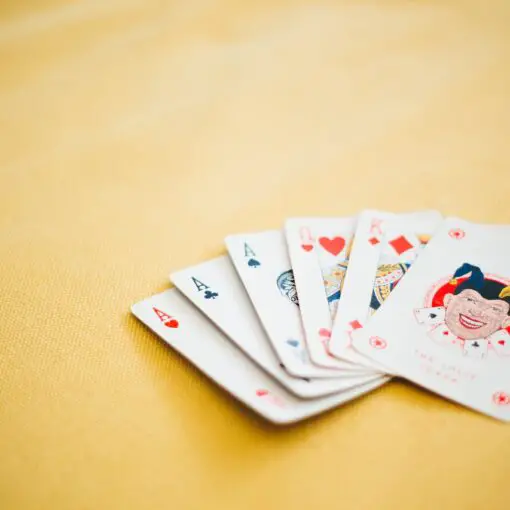
Critical thinking jokes
Critical thinking can make life smoother and smarter, solving all kinds of academic, professional and everyday problems. But it’s not something you […]
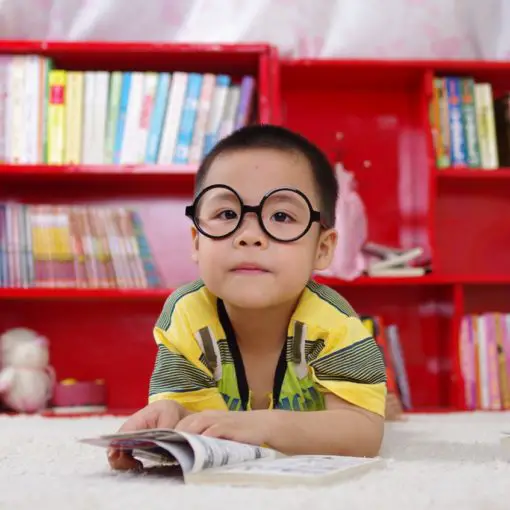
Core critical thinking skills
On a regular basis, people are faced with problems and scenarios that must be assessed and solved. Typically, they are tasked to […]
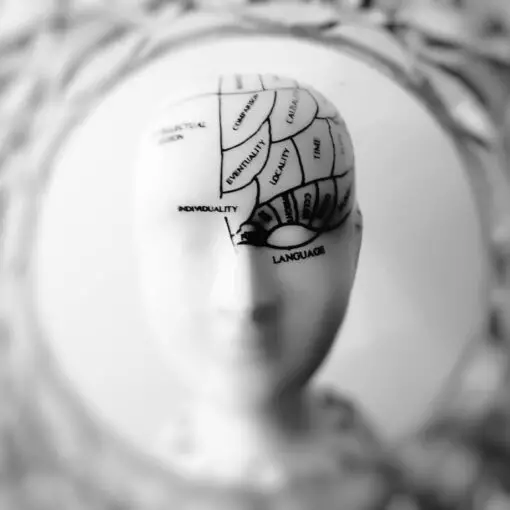
Which Part of the Brain is Related to Critical Thinking?
The brain is a complex organ divided into many, many different regions and subregions. While we are far from understanding the brain’s […]

How it works
Transform your enterprise with the scalable mindsets, skills, & behavior change that drive performance.
Explore how BetterUp connects to your core business systems.
We pair AI with the latest in human-centered coaching to drive powerful, lasting learning and behavior change.
Build leaders that accelerate team performance and engagement.
Unlock performance potential at scale with AI-powered curated growth journeys.
Build resilience, well-being and agility to drive performance across your entire enterprise.
Transform your business, starting with your sales leaders.
Unlock business impact from the top with executive coaching.
Foster a culture of inclusion and belonging.
Accelerate the performance and potential of your agencies and employees.
See how innovative organizations use BetterUp to build a thriving workforce.
Discover how BetterUp measurably impacts key business outcomes for organizations like yours.
A demo is the first step to transforming your business. Meet with us to develop a plan for attaining your goals.

- What is coaching?
Learn how 1:1 coaching works, who its for, and if it's right for you.
Accelerate your personal and professional growth with the expert guidance of a BetterUp Coach.
Types of Coaching
Navigate career transitions, accelerate your professional growth, and achieve your career goals with expert coaching.
Enhance your communication skills for better personal and professional relationships, with tailored coaching that focuses on your needs.
Find balance, resilience, and well-being in all areas of your life with holistic coaching designed to empower you.
Discover your perfect match : Take our 5-minute assessment and let us pair you with one of our top Coaches tailored just for you.

Research, expert insights, and resources to develop courageous leaders within your organization.
Best practices, research, and tools to fuel individual and business growth.
View on-demand BetterUp events and learn about upcoming live discussions.
The latest insights and ideas for building a high-performing workplace.
- BetterUp Briefing
The online magazine that helps you understand tomorrow's workforce trends, today.
Innovative research featured in peer-reviewed journals, press, and more.
Founded in 2022 to deepen the understanding of the intersection of well-being, purpose, and performance
We're on a mission to help everyone live with clarity, purpose, and passion.
Join us and create impactful change.
Read the buzz about BetterUp.
Meet the leadership that's passionate about empowering your workforce.
For Business
For Individuals
Critical thinking is the one skillset you can't afford not to master

Jump to section
What is critical thinking?
5 characteristics of critical thinking, what are critical thinking skills, and why are they important, 6 key critical thinking skills, critical thinking example in real-life, 13 ways to start thinking critically.
Whether you’re aiming to improve your performance at work or simply trying to live a more fulfilling life , you’ll need a variety of hard and soft skills to move the needle. Some skills come naturally to some people, while others need to develop them actively.
One of these skills is critical thinking. But critical thinking itself is made up of several types of skills that contribute to solving problems more effectively.
Let’s explore the different types of critical thinking skills and how you can start improving them to level up your career.
Critical thinking is the ability to analyze facts objectively and form a judgment. It is a form of emotional intelligence .
Someone with critical thinking skills can think clearly and rationally when the situation demands it. It allows them to perform problem-solving and decision-making more effectively.
As a result, you can look further than what you see at face value. You’re able to analyze what you see from a situation and gain some insight that goes further than what’s obvious to anyone from the outside.
Critical thinking also requires being able to understand the logical connection between two or more ideas or concepts. For example, a team working on a company’s pricing strategy needs to think critically about several concepts.
Both the marketing and sales teams must work together. They need to analyze how to maximize sales. But they need to do so while also meeting profit goals. It’s important to understand the logical connection between sales strategy and marketing logistics. It’s the only way to get a good outcome.
Critical thinking is different from creative thinking . Creative thinking is the ability to generate brand new, innovative ideas. On the other hand, critical thinking requires you to carefully and logically analyze what information is given to you. Both are important to maximize results in any given situation.

What defines critical thinking? How does it affect the decision-making process? Here are five characteristics that make up the ability to think critically.
1. Dispositions
Critical thinkers have specific traits that allow them to think the way they do. Some people are predisposed to these traits, while others need to develop them actively.
Some of these dispositions include:
- Open-mindedness
- Respecting evidence and reasoning
- Being able to consider different perspectives and points of view: in other words, having cognitive flexibility
- Not being stuck in one position
- Clarity and precision
2. Argument
Good critical thinkers need to make solid arguments.
An argument is making a statement aided by supporting evidence. It’s important to use well thought-out arguments when you’re in a constructive conflict . When analyzing a situation critically, you’ll need to make several arguments in your own mind to come to a judgment.
3. Reasoning
In addition to arguments, critical thinking also requires inferring conclusions. From the facts and arguments presented to you, you need to use reasoning skills to come to a logical conclusion.
This conclusion will determine the best course of action to take.

4. Criteria
Critical thinking is sometimes a matter of discerning truth from fiction. Not all facts presented to you may have the same level of truth. Certain conditions need to be met for something to be considered believable, and a critical thinker needs to be able to understand that.
5. Metacognition
Metacognition is the ability to think about your own thinking. Critical thinkers should be able to analyze their thoughts so that they can judge whether or not they’ve thought everything through. This helps them come up with better hypotheses.
The critical thinking skills definition is: soft skills that help you in the critical thinking process. Developing these skills can improve your ability to think critically.
Critical thinking skills are considered one of many durable skills in the workplace . Many of these are soft skills that are also useful in other situations.
According to research by America Succeeds, critical thinking is in the top five most requested durable skills in job postings. Those top five durable skills get requested 2.6x more often than the top five hard skills. This goes to show that soft skills like critical thinking skills are in demand in the workplace.
Critical thinking skills are important for several reasons. These include helping you work independently and solve problems . Not all positions require ongoing critical thinking. But, those skills definitely matter to anyone who wants to uplevel their career. And even the most easygoing positions require at least some level of critical thinking skills.
For example, working as an accountant can be straightforward in most cases. But it may require critical thinking skills. For instance, what if certain expenses aren’t easily distributed in simple categories? Without critical thinking skills, an accountant will struggle to work independently and solve problems on their own.
Critical thinking abilities also matter in everyday life. Having a foundation for critical thinking can help you analyze several possible solutions for problems that pop up in the home. It can also help you:
- Analyze different viewpoints
- Come up with the best solution for complex problems
- Become a better learner
The key critical thinking skills are identifying biases, inference, research, identification, curiosity, and judging relevance.
Let’s explore these six critical thinking skills you should learn and why they’re so important to the critical thinking process.
1. Identifying biases
This critical thinking skill is necessary for metacognition, which is the fifth characteristic of critical thinking. It involves knowing when others have a cognitive bias and when you have one yourself.
Biases can influence how someone understands the facts presented to them. But when you’re aware of those biases, you can question yourself on those biases and consider other points of view.
Identifying biases is especially important for people who make hiring decisions. That’s because biases against groups of minorities can lead to inequalities in the workplace when not identified.
For example, imagine a hiring manager comparing two resumes. Their gut feeling could guide them to discount one of the resumes due to a bias against the opposite gender. But let’s say this hiring manager realizes they have this bias. They can then question themselves on whether or not this bias is influencing their judgment.
2. Inference
Inference is the ability to draw conclusions based on the information you have. Without inference, it can be difficult to take action once you’ve analyzed the facts presented to you. Processing information is key to coming up with a reasoned judgment.
For example, let’s go back to the accountant struggling to assign the correct category to a business expense. They can analyze other similar situations and infer the most logical category based on that information.
3. Research
Before you analyze facts and infer a conclusion, you need to find out what those facts are. Researching skills allow you to discover facts and figures to make an argument.
Not all situations will have the required information available to you. Researching skills are necessary to dig into a situation and gather the information you need to think critically.
Some situations don’t require further research. For example, a first responder who arrives on the scene of an automobile accident won’t perform further research. They’ll have to analyze what they see in front of them and decide which injuries are the most urgent to care for.
On the other hand, someone performing a market analysis will need to research competitors and gather information before coming up with an opinion.
4. Identification
Identification is different from inference and research. It involves being able to identify a problem but also what’s influencing that problem.
In short, identification is necessary for someone to realize that they need to think critically about something. Without proper identification skills, it will be difficult for someone to know when it’s time to analyze a situation.
For example, let’s say you’re entering numbers in a spreadsheet. The numbers aren’t coming out as they usually do. Without identification skills, you could easily keep going without realizing there’s an issue. But when you identify what’s going on, you can see that something is broken in the spreadsheet’s formula.
Only once you identify the fact that the formula is broken can you start analyzing what’s going on to solve the issue.
5. Curiosity
Don’t be afraid to question everything and explore what you’re curious about. That’s because intellectual curiosity is a valuable skill, especially when it comes to critical thinking.
One way to practice curiosity is to adopt a beginner’s mindset . When you come into every situation with the mindset of a beginner, you’re able to keep an open mind. You’ll be able to perceive things you may not have noticed when keeping your mind closed.
6. Judging relevance
Not all information is equally pertinent. In order to make a critical judgment, it’s important to be able to judge the relevance of the information you have.
Take, for instance, basic online researching skills. You have access to a plethora of information on virtually every topic imaginable. But performing online research requires you to constantly judge the relevance of what you see.
Without judging relevance, you’d spend too much time on details that don’t matter as much for the final desired outcome. But when you’re able to discern what’s most pertinent, you can give that information more weight as you’re thinking critically.

So what would critical thinking skills look like in a real-life situation?
Let’s imagine you’re working in software quality assurance (QA) as a team lead. But every time your team needs to enter bug regression, everyone gets bottlenecked because you must manually populate the spreadsheet used for the regression. While you do this task, your team cannot be productive without you.
This process happens once a week and easily wastes half an hour for each team member.
First, you must identify what’s going on. The team gets bottlenecked because only you, as the team lead, can access the information required to fill in the regression spreadsheet.
Next, you can research information. You can inquire to higher-ups about the reason why only you have access to this information. You can also speak to other teams about what potential solutions they’ve come up with to solve this problem.
Once you’ve done your research, it’s time to analyze the information and judge relevance. Some teams have solutions that don’t apply to you, so that information isn’t relevant anymore.
Figure out if there are any personal biases before you analyze your information.
For example, it’s possible that you don’t get along with one of the other team leads. As a result, you could discount the information they’ve given you. But by identifying this bias, you can look past your personal opinion of this person and see how valuable their solution is.
Based on what you’ve analyzed, it’s time to brainstorm and come up with a solution. You realize that creating a simple, automated script will save your team’s time. And it will do so without consuming too many resources from the engineering department.
Next, present your solution to your manager. Explain how you came to this conclusion.
Now, let’s say your spreadsheet automation solution is approved. It’s important to go back and analyze what happens after implementing the solution. But only do this once the spreadsheet has been in place for long enough to gather plenty of information.
Here’s an example. You could realize that the solution did solve the bottleneck. But, the script also slows down the spreadsheet and makes it difficult to work with. This would require you to go back to the drawing board and start the process all over again.
Want to start improving your own critical thinking skill sets? Here’s how you can improve critical thinking skills using 13 techniques:
- Play games that require critical thinking skills
- Ask more questions, even basic ones
- Question your assumptions
- Develop your technical skills so that you can identify problems more easily
- Find ways to solve more problems (at work and at home)
- Become aware of your mental processes, like the availability heuristic
- Think for yourself: don’t adopt other people’s opinions without questioning them first
- Seek out diversity of thought
- Start developing foresight
- Try active listening
- Weigh the consequences of different actions before you act
- Seek a mentor who can help you develop these skills
- Get professional coaching

How to improve your critical thinking skills
Critical thinking skills aren’t always easy to develop. But it’s much easier to start thinking critically when you have someone to work with. Try a custom BetterUp demo to see how a coach can help you develop your critical thinking skills today.
Transform your life
Make meaningful changes and become the best version of yourself. BetterUp's professional Coaches are here to support your personal growth journey.
Maggie Wooll, MBA
Maggie Wooll is a researcher, author, and speaker focused on the evolving future of work. Formerly the lead researcher at the Deloitte Center for the Edge, she holds a Bachelor of Science in Education from Princeton University and an MBA from the University of Virginia Darden School of Business. Maggie is passionate about creating better work and greater opportunities for all.
How to develop critical thinking skills
What’s convergent thinking how to be a better problem-solver, the most critical skills for leaders are fundamentally human, why self-management is key to success and how to improve yours, the new skill set needed to succeed in the hybrid workplace, how intrapersonal skills shape teams, plus 5 ways to build them, how to be optimistic, building strength for tomorrow: new president of betterup care™ on extending proactive mental health across the enterprise, what is social well-being definition, types, and how to achieve it, similar articles, what is lateral thinking 7 techniques to encourage creative ideas, 9 cognitive skill examples and how to improve them, when to trust your gut (and when not to), how to pitch ideas: 8 tips to captivate any audience, what is creative thinking and why does it matter, what are analytical skills examples and how to level up, how divergent thinking can drive your creativity, how the minto pyramid principle can enhance your communication skills, stay connected with betterup, get our newsletter, event invites, plus product insights and research..
3100 E 5th Street, Suite 350 Austin, TX 78702
- Platform Overview
- Integrations
- Powered by AI
- BetterUp Lead
- BetterUp Manage™
- BetterUp Care™
- Sales Performance
- Diversity & Inclusion
- Case Studies
- Why BetterUp?
- About Coaching
- Find your Coach
- Career Coaching
- Communication Coaching
- Life Coaching
- News and Press
- Leadership Team
- Become a BetterUp Coach
- BetterUp Labs
- Center for Purpose & Performance
- Leadership Training
- Business Coaching
- Contact Support
- Contact Sales
- Privacy Policy
- Acceptable Use Policy
- Trust & Security
- Cookie Preferences
The Value of Critical Thinking in Nursing

- How Nurses Use Critical Thinking
- How to Improve Critical Thinking
- Common Mistakes

Some experts describe a person’s ability to question belief systems, test previously held assumptions, and recognize ambiguity as evidence of critical thinking. Others identify specific skills that demonstrate critical thinking, such as the ability to identify problems and biases, infer and draw conclusions, and determine the relevance of information to a situation.
Nicholas McGowan, BSN, RN, CCRN, has been a critical care nurse for 10 years in neurological trauma nursing and cardiovascular and surgical intensive care. He defines critical thinking as “necessary for problem-solving and decision-making by healthcare providers. It is a process where people use a logical process to gather information and take purposeful action based on their evaluation.”
“This cognitive process is vital for excellent patient outcomes because it requires that nurses make clinical decisions utilizing a variety of different lenses, such as fairness, ethics, and evidence-based practice,” he says.
How Do Nurses Use Critical Thinking?
Successful nurses think beyond their assigned tasks to deliver excellent care for their patients. For example, a nurse might be tasked with changing a wound dressing, delivering medications, and monitoring vital signs during a shift. However, it requires critical thinking skills to understand how a difference in the wound may affect blood pressure and temperature and when those changes may require immediate medical intervention.
Nurses care for many patients during their shifts. Strong critical thinking skills are crucial when juggling various tasks so patient safety and care are not compromised.
Jenna Liphart Rhoads, Ph.D., RN, is a nurse educator with a clinical background in surgical-trauma adult critical care, where critical thinking and action were essential to the safety of her patients. She talks about examples of critical thinking in a healthcare environment, saying:
“Nurses must also critically think to determine which patient to see first, which medications to pass first, and the order in which to organize their day caring for patients. Patient conditions and environments are continually in flux, therefore nurses must constantly be evaluating and re-evaluating information they gather (assess) to keep their patients safe.”
The COVID-19 pandemic created hospital care situations where critical thinking was essential. It was expected of the nurses on the general floor and in intensive care units. Crystal Slaughter is an advanced practice nurse in the intensive care unit (ICU) and a nurse educator. She observed critical thinking throughout the pandemic as she watched intensive care nurses test the boundaries of previously held beliefs and master providing excellent care while preserving resources.
“Nurses are at the patient’s bedside and are often the first ones to detect issues. Then, the nurse needs to gather the appropriate subjective and objective data from the patient in order to frame a concise problem statement or question for the physician or advanced practice provider,” she explains.
Top 5 Ways Nurses Can Improve Critical Thinking Skills
We asked our experts for the top five strategies nurses can use to purposefully improve their critical thinking skills.
Case-Based Approach
Slaughter is a fan of the case-based approach to learning critical thinking skills.
In much the same way a detective would approach a mystery, she mentors her students to ask questions about the situation that help determine the information they have and the information they need. “What is going on? What information am I missing? Can I get that information? What does that information mean for the patient? How quickly do I need to act?”
Consider forming a group and working with a mentor who can guide you through case studies. This provides you with a learner-centered environment in which you can analyze data to reach conclusions and develop communication, analytical, and collaborative skills with your colleagues.
Practice Self-Reflection
Rhoads is an advocate for self-reflection. “Nurses should reflect upon what went well or did not go well in their workday and identify areas of improvement or situations in which they should have reached out for help.” Self-reflection is a form of personal analysis to observe and evaluate situations and how you responded.
This gives you the opportunity to discover mistakes you may have made and to establish new behavior patterns that may help you make better decisions. You likely already do this. For example, after a disagreement or contentious meeting, you may go over the conversation in your head and think about ways you could have responded.
It’s important to go through the decisions you made during your day and determine if you should have gotten more information before acting or if you could have asked better questions.
During self-reflection, you may try thinking about the problem in reverse. This may not give you an immediate answer, but can help you see the situation with fresh eyes and a new perspective. How would the outcome of the day be different if you planned the dressing change in reverse with the assumption you would find a wound infection? How does this information change your plan for the next dressing change?
Develop a Questioning Mind
McGowan has learned that “critical thinking is a self-driven process. It isn’t something that can simply be taught. Rather, it is something that you practice and cultivate with experience. To develop critical thinking skills, you have to be curious and inquisitive.”
To gain critical thinking skills, you must undergo a purposeful process of learning strategies and using them consistently so they become a habit. One of those strategies is developing a questioning mind. Meaningful questions lead to useful answers and are at the core of critical thinking .
However, learning to ask insightful questions is a skill you must develop. Faced with staff and nursing shortages , declining patient conditions, and a rising number of tasks to be completed, it may be difficult to do more than finish the task in front of you. Yet, questions drive active learning and train your brain to see the world differently and take nothing for granted.
It is easier to practice questioning in a non-stressful, quiet environment until it becomes a habit. Then, in the moment when your patient’s care depends on your ability to ask the right questions, you can be ready to rise to the occasion.
Practice Self-Awareness in the Moment
Critical thinking in nursing requires self-awareness and being present in the moment. During a hectic shift, it is easy to lose focus as you struggle to finish every task needed for your patients. Passing medication, changing dressings, and hanging intravenous lines all while trying to assess your patient’s mental and emotional status can affect your focus and how you manage stress as a nurse .
Staying present helps you to be proactive in your thinking and anticipate what might happen, such as bringing extra lubricant for a catheterization or extra gloves for a dressing change.
By staying present, you are also better able to practice active listening. This raises your assessment skills and gives you more information as a basis for your interventions and decisions.
Use a Process
As you are developing critical thinking skills, it can be helpful to use a process. For example:
- Ask questions.
- Gather information.
- Implement a strategy.
- Evaluate the results.
- Consider another point of view.
These are the fundamental steps of the nursing process (assess, diagnose, plan, implement, evaluate). The last step will help you overcome one of the common problems of critical thinking in nursing — personal bias.
Common Critical Thinking Pitfalls in Nursing
Your brain uses a set of processes to make inferences about what’s happening around you. In some cases, your unreliable biases can lead you down the wrong path. McGowan places personal biases at the top of his list of common pitfalls to critical thinking in nursing.
“We all form biases based on our own experiences. However, nurses have to learn to separate their own biases from each patient encounter to avoid making false assumptions that may interfere with their care,” he says. Successful critical thinkers accept they have personal biases and learn to look out for them. Awareness of your biases is the first step to understanding if your personal bias is contributing to the wrong decision.
New nurses may be overwhelmed by the transition from academics to clinical practice, leading to a task-oriented mindset and a common new nurse mistake ; this conflicts with critical thinking skills.
“Consider a patient whose blood pressure is low but who also needs to take a blood pressure medication at a scheduled time. A task-oriented nurse may provide the medication without regard for the patient’s blood pressure because medication administration is a task that must be completed,” Slaughter says. “A nurse employing critical thinking skills would address the low blood pressure, review the patient’s blood pressure history and trends, and potentially call the physician to discuss whether medication should be withheld.”
Fear and pride may also stand in the way of developing critical thinking skills. Your belief system and worldview provide comfort and guidance, but this can impede your judgment when you are faced with an individual whose belief system or cultural practices are not the same as yours. Fear or pride may prevent you from pursuing a line of questioning that would benefit the patient. Nurses with strong critical thinking skills exhibit:
- Learn from their mistakes and the mistakes of other nurses
- Look forward to integrating changes that improve patient care
- Treat each patient interaction as a part of a whole
- Evaluate new events based on past knowledge and adjust decision-making as needed
- Solve problems with their colleagues
- Are self-confident
- Acknowledge biases and seek to ensure these do not impact patient care
An Essential Skill for All Nurses
Critical thinking in nursing protects patient health and contributes to professional development and career advancement. Administrative and clinical nursing leaders are required to have strong critical thinking skills to be successful in their positions.
By using the strategies in this guide during your daily life and in your nursing role, you can intentionally improve your critical thinking abilities and be rewarded with better patient outcomes and potential career advancement.
Frequently Asked Questions About Critical Thinking in Nursing
How are critical thinking skills utilized in nursing practice.
Nursing practice utilizes critical thinking skills to provide the best care for patients. Often, the patient’s cause of pain or health issue is not immediately clear. Nursing professionals need to use their knowledge to determine what might be causing distress, collect vital information, and make quick decisions on how best to handle the situation.
How does nursing school develop critical thinking skills?
Nursing school gives students the knowledge professional nurses use to make important healthcare decisions for their patients. Students learn about diseases, anatomy, and physiology, and how to improve the patient’s overall well-being. Learners also participate in supervised clinical experiences, where they practice using their critical thinking skills to make decisions in professional settings.
Do only nurse managers use critical thinking?
Nurse managers certainly use critical thinking skills in their daily duties. But when working in a health setting, anyone giving care to patients uses their critical thinking skills. Everyone — including licensed practical nurses, registered nurses, and advanced nurse practitioners —needs to flex their critical thinking skills to make potentially life-saving decisions.
Meet Our Contributors

Crystal Slaughter, DNP, APRN, ACNS-BC, CNE
Crystal Slaughter is a core faculty member in Walden University’s RN-to-BSN program. She has worked as an advanced practice registered nurse with an intensivist/pulmonary service to provide care to hospitalized ICU patients and in inpatient palliative care. Slaughter’s clinical interests lie in nursing education and evidence-based practice initiatives to promote improving patient care.

Jenna Liphart Rhoads, Ph.D., RN
Jenna Liphart Rhoads is a nurse educator and freelance author and editor. She earned a BSN from Saint Francis Medical Center College of Nursing and an MS in nursing education from Northern Illinois University. Rhoads earned a Ph.D. in education with a concentration in nursing education from Capella University where she researched the moderation effects of emotional intelligence on the relationship of stress and GPA in military veteran nursing students. Her clinical background includes surgical-trauma adult critical care, interventional radiology procedures, and conscious sedation in adult and pediatric populations.

Nicholas McGowan, BSN, RN, CCRN
Nicholas McGowan is a critical care nurse with 10 years of experience in cardiovascular, surgical intensive care, and neurological trauma nursing. McGowan also has a background in education, leadership, and public speaking. He is an online learner who builds on his foundation of critical care nursing, which he uses directly at the bedside where he still practices. In addition, McGowan hosts an online course at Critical Care Academy where he helps nurses achieve critical care (CCRN) certification.

Max Marvelous
19 Telltale Signs That Someone Is Poorly Educated
Posted: May 10, 2024 | Last updated: May 10, 2024

As Nelson Mandela once famously said, “Education is the most powerful weapon you can use to change the world.” But what happens when the lack of quality, accessibility, or sheer negligence dulls that weapon? The fabric of society becomes interwoven with threads of ignorance, making it weaker and less vibrant.
This does not necessarily mean formal education alone but a well-rounded understanding of the basics that make us informed empathetic, and rational human beings. Here are 19 telltale signs of a poor education system’s footprint on someone’s demeanor and understanding of the world.
Lack of Critical Thinking
Critical thinking is the spine of education, yet some individuals struggle to analyze or evaluate facts before forming an opinion. As Socrates once suggested, “The unexamined life is not worth living.”
Without critical thinking, opinions often echo someone else’s voice rather than a product of personal reasoning.

Inability to Respect Opposing Views
In the modern age of polarized opinions, an educated mind recognizes the importance of diverse perspectives. Dismissing or disrespecting opposing viewpoints without contemplating their merits is a glaring sign of a poorly educated mindset.

They Struggle To Grasp Sarcasm
Sarcasm is a form of wit that requires understanding nuance and irony. A lack of education can lead to the inability to pick up on these subtle cues, resulting in missed opportunities for humor or, worse, taking sarcasm at face value.

Poor Literacy Skills
The ability to read and write proficiently is fundamental. Yet, we encounter adults who struggle with basic literacy. This signifies a failed education system and a personal and professional growth barrier.

Multisyllabic Words Are Their Arch-nemesis
You know the type. When a word longer than ‘superficial’ enters the conversation, their eyes glaze over as if they’ve been asked to translate ancient Greek on the spot.
The avoidance and the palpable fear of polysyllabic words hint at their educational gaps.

Difficulty in Expressing Thoughts Clearly
Communication is an art, and clarity is its highest virtue. “ The ability to simplify means eliminating the unnecessary so that the necessary may speak ,” Hans Hofmann wisely noted. Lack of education often muddles what could have been a clear stream of thought.

Lack of Curiosity
A telltale sign of a poorly educated person is the absence of curiosity. Albert Einstein aptly stated, “The important thing is not to stop questioning. Curiosity has its reason for existing.”
Education fosters a love for learning, transcending formal schooling and prompting lifelong curiosity about the world.

Inability to Engage in Meaningful Conversations
Communication is a two-way street, requiring listening as much as speaking—an educated individual values meaningful conversations, which involve exchanging ideas and learning from the other person.
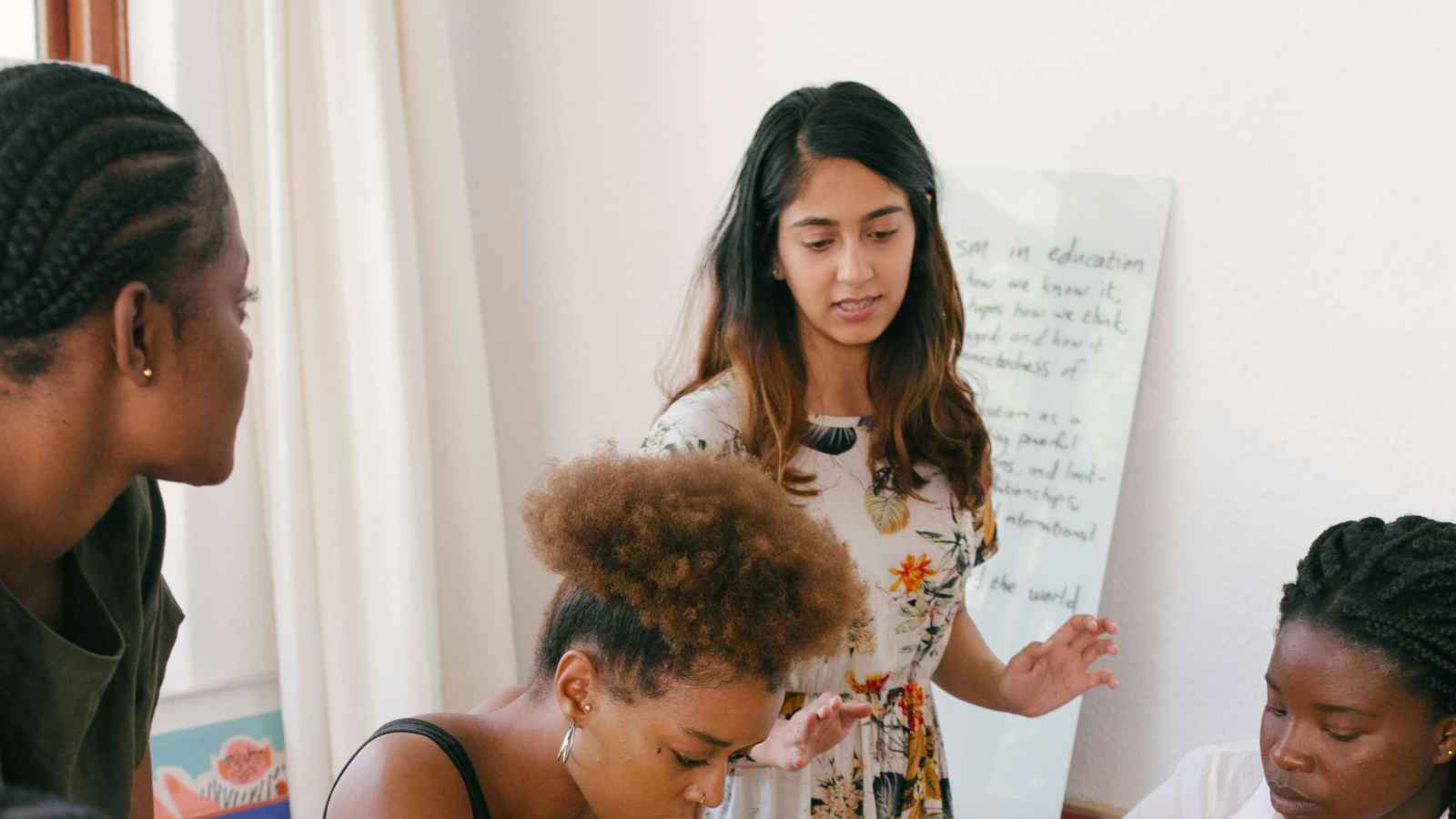
Spreading Misinformation
In the era of fake news, it’s essential to discern the information we consume and share. Educated individuals understand the power of information and take the time to verify facts before spreading them.

Sense of Entitlement is Titanic-Sized
Education teaches humility and the importance of hard work. It instills a sense of responsibility and gratitude rather than expecting things to be handed to .

Reliance on Social Media for News
While social media is a valuable tool for staying connected, relying on it solely for news and information can indicate a lack of critical media literacy skills.

Absence of Empathy
Empathy—the ability to understand and share another person’s feelings—is a sign of emotional intelligence. Education teaches us to step into someone else’s shoes, fostering empathy and compassion.
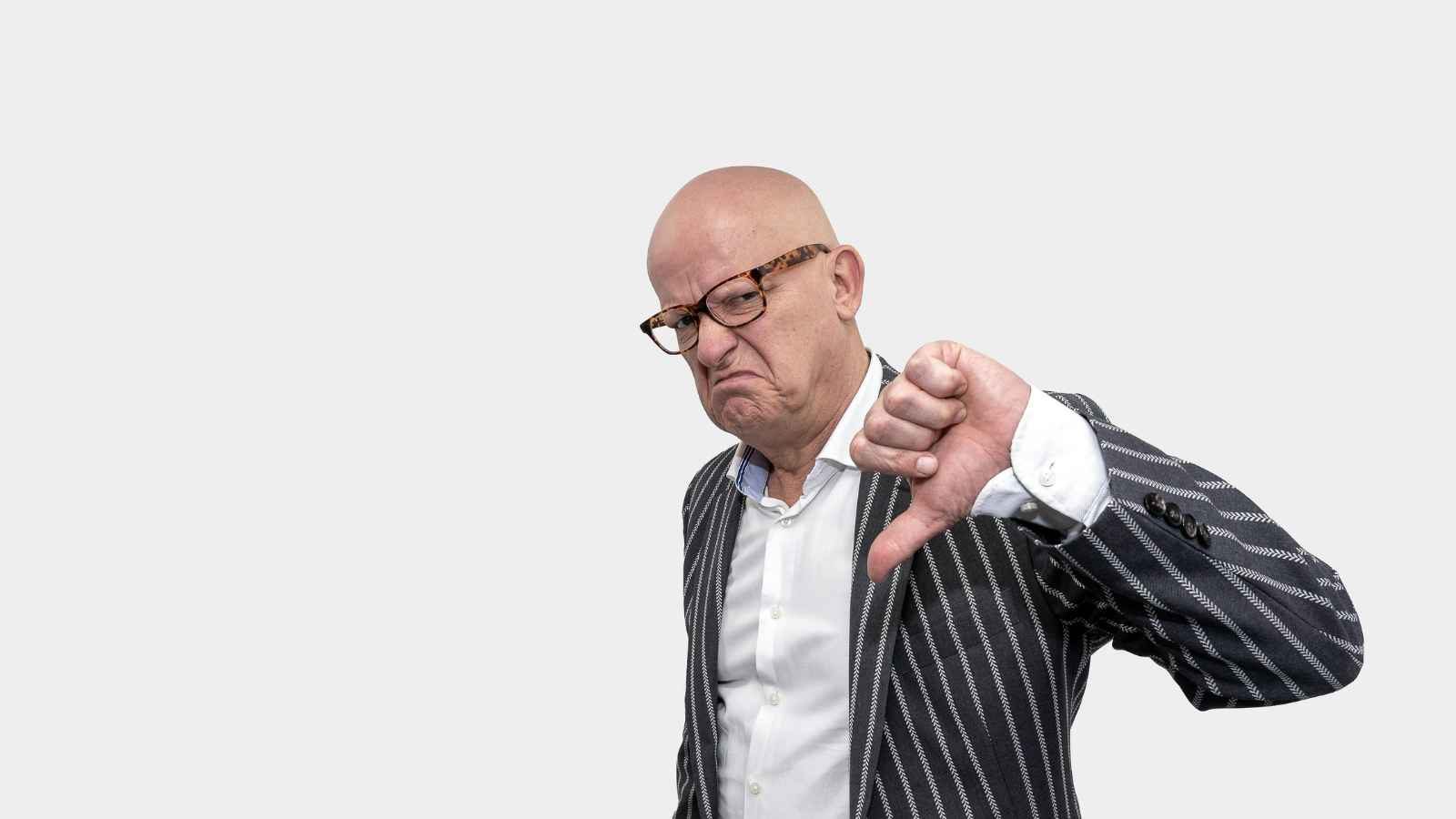
Failure to Recognize Bias
We all have biases, but recognizing and acknowledging them is critical to overcoming ignorance. A poorly educated person often fails to see their own biases or understand their impact on judgment.
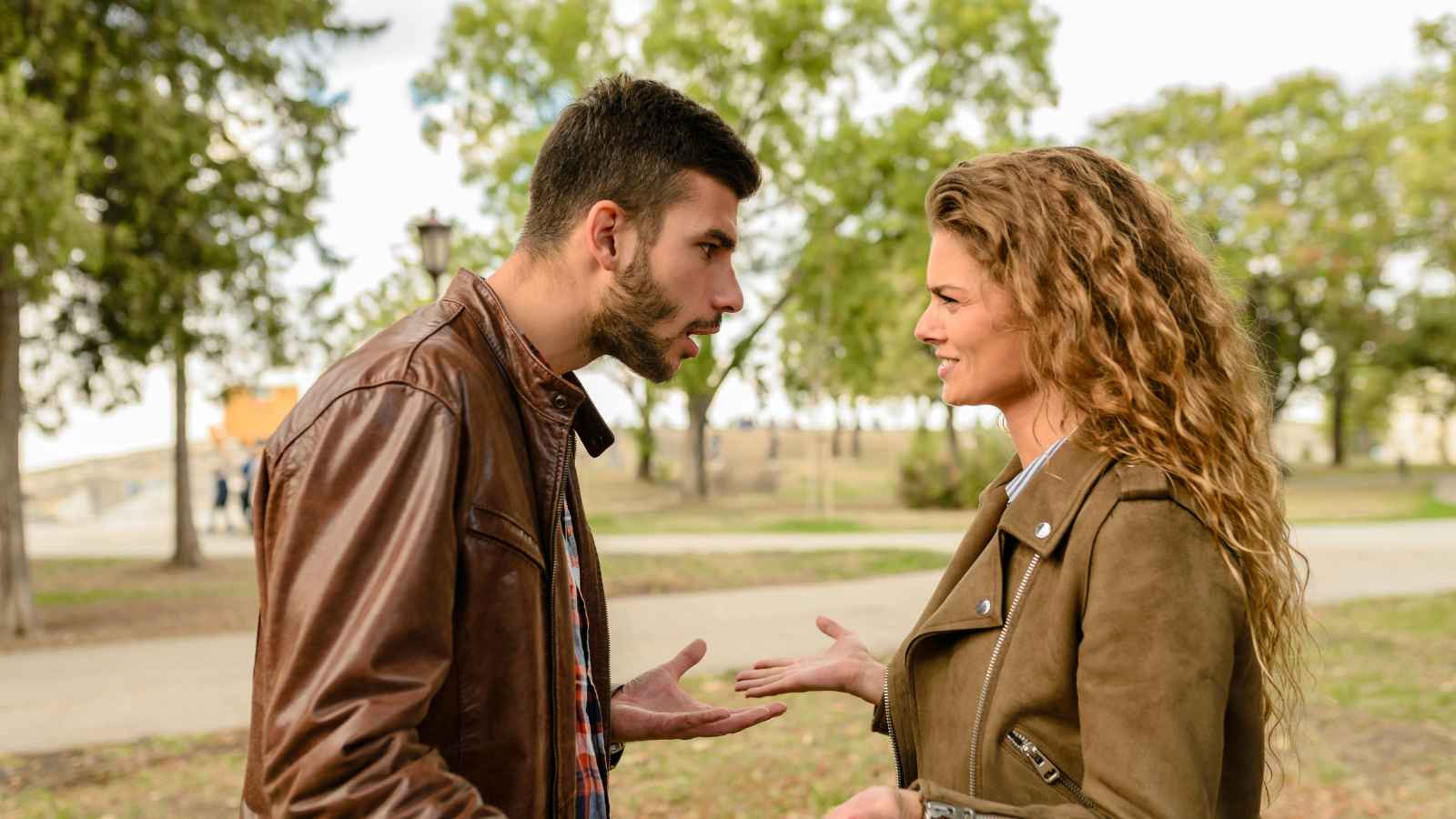
Resorting to Personal Attacks in Arguments
When unable to articulate their stance based on facts and reasoning, some individuals resort to personal attacks—a clear indication of a limited educational background.

Subpar Problem-Solving Skills
Life is a series of problems to be solved. Education equips us with the tools to tackle challenges creatively and effectively.
Without proper education, individuals may struggle to think critically and devise viable solutions.

Poor Financial Literacy
The inability to manage personal finances, including budgeting, saving, and investing, often stems from a lack of primary financial education. This can lead to poor financial decisions, debt, and financial instability.

Cultural Insensitivity
Globalization demands cultural sensitivity and awareness. A poorly educated person might display ignorance or even disdain toward cultures other than their own.

Inability to Analyze Data
Data is everywhere in the digital age. Understanding basic statistics and interpreting data is essential for making informed decisions. Without proper education, individuals may struggle to make sense of data and fall prey to misinformation.

Short-term Thinking
Finally, an inability to plan for the future or consider the long-term consequences of one’s actions often indicates a lack of critical educational foundations. Education teaches us to think ahead and assess the impact of our choices on ourselves and others.
Education shapes our worldview, molds our values, and influences our actions. It’s about more than just earning degrees; it’s about being open to learning every day from every person and situation. Let us strive to combine formal education with the education of life to enrich our minds and souls truly.
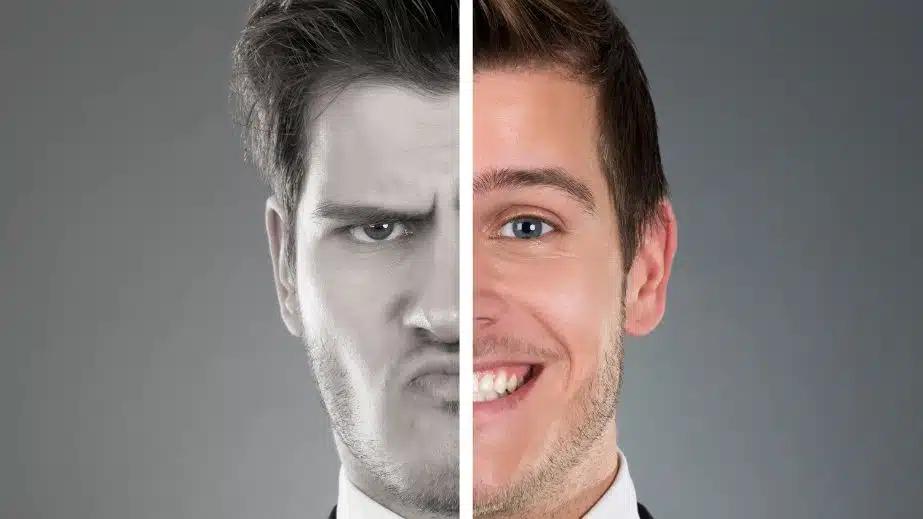
12 Signs That Someone Might be a Toxic or Evil Person
Throughout life, we meet many people who enrich our lives or, conversely, leave us feeling depleted and stressed after interactions.

18 Things People Boast About That Instantly Turn Others Off!
Navigating social situations can often feel like a minefield of potential missteps. One of the trickiest paths to tread can be the fine line between sharing your achievements and coming across as braggadocious.

13 Habits of People Who Never (or Rarely) Get Anxious, According to Therapists
In today’s fast-paced world, it’s easy to get caught up in the chaos and let anxiety take over. However, some folks have nailed the art of staying calm and collected, no matter what life throws their way. Here’s a list of 13 habits that these Zen masters swear by, according to therapists:
More for You
Fani Willis, Letitia James Face Probe Over Donald Trump Cases
The No. 1 question to never ask in a job interview, says CEO who's interviewed hundreds: 'You risk sending the wrong message'
Mediterranean Cucumber Tomato Salad
McDonald's is considering a $5 meal deal. Here's what you'd get.
100 Funny Inspirational Quotes for When You Need a Good Laugh to Get Moving
‘Cheers’ star declares why he thinks working-class Americans support Trump: ‘He knows how to build things’
New 'Dream Team'? USA basketball unveils 2024 Paris Olympics roster
3 pieces of information you should never share in a job interview and what to say instead, from a recruiting manager
Black activists in the Bronx assail controversial Hochul remark
Don't Crush Your Metal Cans When You Recycle Them. Here's Why
What Is Canadian Bacon?
31 Hearty Apps That Will Replace Dinner Altogether
The 31 Best Golden Globes Dresses Ever
AI could split workers into 2: The ones whose jobs get better and the ones who lose them completely
Little League World Series hero, Olympic gold medalist Sean Burroughs 'tragically passed away' at 43
Warren Buffett Says He Lives by 3 Leadership Rules for Success
Indiana Fever coach says Caitlin Clark needs to break her habits in the WNBA
Scientists forge an ‘impossible material’: a metal alloy with unmatched strength and toughness at all temperatures
Garden expert's "best weeding method ever" that uses "no chemicals"
Social Media Mocks Steve Bannon After Contempt Conviction Is Upheld

Contribute to the Bing forum! Click here to learn more 💡
April 9, 2024
Contribute to the Bing forum!
Click here to learn more 💡
- Search the community and support articles
- Search Community member
Ask a new question
"How can we ensure Copilot empowers critical thinking, rather than replacing it?"
I was recently diving deep into a research project on the social impact of AI. I needed to analyze a ton of data and identify potential trends. Naturally, I turned to Copilot for assistance.
It was fantastic at churning out data visualizations and suggesting potential correlations. However, I started to notice a pattern. Copilot kept presenting the information in a way that confirmed a specific viewpoint I initially had.
It was like being stuck in a comfortable echo chamber. While the data visualizations were impressive, they weren't necessarily telling the whole story.
That's when it hit me: Copilot, in its eagerness to help, was potentially hindering my critical thinking. I had to consciously step back and re-evaluate the data from scratch, actively searching for counter-arguments and alternative perspectives.
The Learning Moment:
This experience made me wonder: How can Copilot be designed to not just be a helpful assistant, but also a tool that encourages critical thinking ?
- Subscribe to RSS feed
Report abuse
Reported content has been submitted
Replies (2)
- Independent Advisor
Was this reply helpful? Yes No
Sorry this didn't help.
Great! Thanks for your feedback.
How satisfied are you with this reply?
Thanks for your feedback, it helps us improve the site.
Thanks for your feedback.
Question Info
- Feature suggestions
- Norsk Bokmål
- Ελληνικά
- Русский
- עברית
- العربية
- ไทย
- 한국어
- 中文(简体)
- 中文(繁體)
- 日本語

IMAGES
VIDEO
COMMENTS
It makes you a well-rounded individual, one who has looked at all of their options and possible solutions before making a choice. According to the University of the People in California, having critical thinking skills is important because they are [ 1 ]: Universal. Crucial for the economy. Essential for improving language and presentation skills.
Critical thinking is the ability to effectively analyze information and form a judgment. To think critically, you must be aware of your own biases and assumptions when encountering information, and apply consistent standards when evaluating sources. Critical thinking skills help you to: Identify credible sources. Evaluate and respond to arguments.
Here are some mind games and scenarios you can solve using critical thinking. You can see the solution(s) at the end of the post. 37. The Farmer, Fox, Chicken, and Grain Problem. A farmer is at a riverbank with a fox, a chicken, and a grain bag. He needs to get all three items across the river. However, his boat can only carry himself and one ...
Simply put, critical thinking is the act of deliberately analyzing information so that you can make better judgements and decisions. It involves using things like logic, reasoning, and creativity, to draw conclusions and generally understand things better. This may sound like a pretty broad definition, and that's because critical thinking is a ...
Critical thinking is the discipline of rigorously and skillfully using information, experience, observation, and reasoning to guide your decisions, actions, and beliefs. You'll need to actively question every step of your thinking process to do it well. Collecting, analyzing and evaluating information is an important skill in life, and a highly ...
Critical thinking might be described as the ability to engage in reflective and independent thinking. In essence, critical thinking requires you to use your ability to reason. It is about being an active learner rather than a passive recipient of information. Critical thinkers rigorously question ideas and assumptions rather than accepting them ...
The exact definition of critical thinking is still debated among scholars. It has been defined in many different ways including the following: . "purposeful, self-regulatory judgment which results in interpretation, analysis, evaluation, and inference, as well as explanation of the evidential, conceptual, methodological, criteriological, or ...
Critical thinking refers to the ability to analyze information objectively and make a reasoned judgment. It involves the evaluation of sources, such as data, facts, observable phenomena, and research findings. Good critical thinkers can draw reasonable conclusions from a set of information, and discriminate between useful and less useful ...
Critical thinking is the analysis of available facts, evidence, observations, and arguments in order to form a judgement by the application of rational, skeptical, and unbiased analyses and evaluation. The application of critical thinking includes self-directed, self-disciplined, self-monitored, and self-corrective habits of the mind, thus a critical thinker is a person who practices the ...
Critical Thinking. Critical thinking is a widely accepted educational goal. Its definition is contested, but the competing definitions can be understood as differing conceptions of the same basic concept: careful thinking directed to a goal. Conceptions differ with respect to the scope of such thinking, the type of goal, the criteria and norms ...
Critical thinking is a kind of thinking in which you question, analyse, interpret , evaluate and make a judgement about what you read, hear, say, or write. The term critical comes from the Greek word kritikos meaning "able to judge or discern". Good critical thinking is about making reliable judgements based on reliable information.
Critical thinking skills examples. There are six main skills you can develop to successfully analyze facts and situations and come up with logical conclusions: 1. Analytical thinking. Being able to properly analyze information is the most important aspect of critical thinking. This implies gathering information and interpreting it, but also ...
With critical thinking, you can tackle problems with confidence, communicate your thoughts and ideas clearly, and reduce the influence of emotions, biases, and misinformation. Plus, by using critical thinking, you can continue to grow and develop as a person by questioning your own beliefs and perspectives. Elder and Paul's article ...
Critical thinking can help you better understand yourself, and in turn, help you avoid any kind of negative or limiting beliefs, and focus more on your strengths. Being able to share your thoughts can increase your quality of life. 4. Form Well-Informed Opinions.
The best way to understand how problem-solving and critical thinking differ is to think of problem-solving as much more narrow. You're focused on finding a solution. In contrast, you can use critical thinking for a variety of use cases beyond solving a problem - like answering questions or identifying opportunities for improvement.
Decision matrices are a great way to identify the best option between different choices. Check out our article on 7 steps to creating a decision matrix. 1. Identify the problem. Before you put those critical thinking skills to work, you first need to identify the problem you're solving.
First, keep in mind that critical thinking is simply a "deliberate thought process.". Basically, it means that you are using reason and logic to come to a conclusion about an issue or decision you are tangling with. And clear, sound reasoning is something that will help you every day. To help you make the leap from classroom to real world ...
Top 5 critical thinking skills. Here are five common and impactful critical thinking skills you might consider highlighting on your resume or in an interview: 1. Observation. Observational skills are the starting point for critical thinking. People who are observant can quickly sense and identify a new problem.
Before trying to use Critical Thinking, you need to know what it is. The idea was first put to words by John Dewey in 1910, though the Ancient Greeks applied it without calling it such. The concept involves reflective thought and the development of a scientific attitude towards problems. Critical Thinking utilizes data, information, observation ...
The key critical thinking skills are identifying biases, inference, research, identification, curiosity, and judging relevance. Let's explore these six critical thinking skills you should learn and why they're so important to the critical thinking process. 1. Identifying biases.
An example of critical thinking in the workplace is performing a self-evaluation. You can use critical thinking to analyze your performance and your contributions to a team or organization. For example, you may examine your performance reviews and collect information about the impacts you've made to help you assess your own work fairly.
Let's say, you have a Powerpoint on how critical thinking can reduce poverty in the United States. You'll primarily have to define critical thinking for the viewers, as well as use a lot of critical thinking questions and synonyms to get them to be familiar with your methods and start the thinking process behind it.
Use a Process. As you are developing critical thinking skills, it can be helpful to use a process. For example: Ask questions. Gather information. Implement a strategy. Evaluate the results. Consider another point of view. These are the fundamental steps of the nursing process (assess, diagnose, plan, implement, evaluate). The last step will ...
Introducing problem-solving models can provide a structured approach to critical thinking. These models, such as the Six Thinking Hats or the Five Whys technique, offer clear steps for analysis ...
Critical thinking is the spine of education, yet some individuals struggle to analyze or evaluate facts before forming an opinion. As Socrates once suggested, "The unexamined life is not worth ...
Information-systems document from K12, 3 pages, 1. Is it possible for a business to behave legally but not ethically? Defend your answer; you may use hypothetical or real-world examples in your response. Legal vs. Ethical Behavior: Certainly, a business can operate within the confines of the law while
This enables continuous refinement and improvement of the system's ability to promote critical thinking. By incorporating these strategies into Copilot's design, it can evolve from being a helpful assistant to a valuable tool that actively fosters critical thinking and encourages users to explore diverse perspectives during research and analysis.
Trust in the process and know that the details will emerge as you work through the subsequent steps of the framework. By keeping the vision stage focused on outcomes rather than solutions, you create space for innovative thinking and collaboration as you progress through the strategic thinking journey. Step 3: Identify and prioritize the gaps